|

HOME |
ABOUT | INDEX |
NEWS |
FACEBOOK |
CONTACT
TRANSITION
Transgender | Transsexual | Gender Reaffirmation | Sex Reassignment |
Treatment
Transgender
Crisis Lifeline:
877-565-8860
Transgender Definition
Transgender people are people who have a gender identity
or gender expression that differs from their assigned
(natal) sex. Transgender people are sometimes called transsexual
if they desire medical assistance to transition from one
sex to another. The term "transgender" can also be used
an umbrella term to refer to people whose gender
identity is the opposite of their assigned sex (trans
men and trans women). It may include people who are not
exclusively masculine or feminine (people who are genderqueer, bigender, pangender, genderfluid, agender).
Other definitions of "transgender" also include people
who belong to a third gender, or conceptualize
transgender people as a third gender.
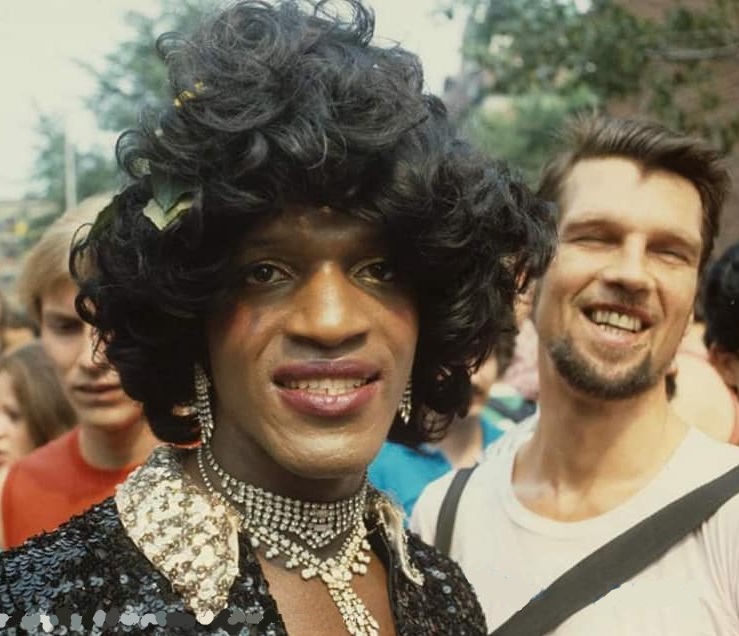



Anna Akana:
Discussing Trans Surgery
Erica Deuso Makes Trans History: Elected
as Pennsylvania Mayor
These Cities are Stepping Up to
Provide Sanctuary to Trans
People
AOC Assures Trans
Kids They’re Not to Blame: You
are Fine Just the Way You Are
Transgender
Students Deserve to Learn and
Thrive in School
Barack Obama
Shares His Advice for Changing
Hearts and Minds on Trans Rights
Texas Becomes
20th State with a Transgender
Bathroom Law
Alan Cumming on Trans Facts
TED Talk: Why Are Trans People
Everywhere?
Which State Has
the Most Transgender People?
Over 100,000 Take
to London Streets for
Record-Breaking Trans Pride
SPLC: Why Gender
Affirming Care is Necessary
Puberty Blockers
Ban Causing Extensive Harm to
Trans Youth, Study Shows
Trump Demonizing Trans People is
a Deliberate Distraction
Airyn De Niro Is
Ready to Be Seen on Her Own
Terms
As a trans person, you don't transition to become
someone else.
You transition to stop pretending that you are someone
else.
There's a huge difference.
The
transgender designation is oftentimes expressed as the
abbreviation "trans." You might also see the term
written with an asterisk(*), as in: trans*. Adding the
asterisk indicates a broader, more expansive, more
inclusive meaning beyond the basic definition of
transgender.
Being transgender is independent of sexual orientation.
Transgender people may identify as heterosexual,
homosexual, bisexual, asexual, or may consider
conventional sexual orientation labels inadequate or
inapplicable. The term transgender can also be
distinguished from intersex, a term that describes
people born with physical sex characteristics that do
not fit typical binary notions of male or female bodies.



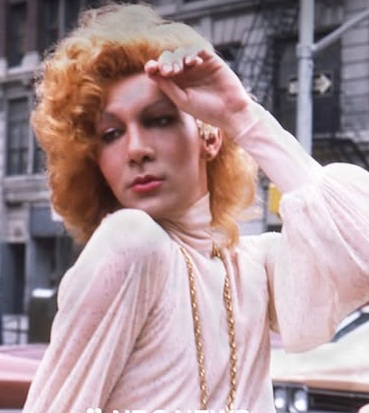
Best Trans
Comeback
Carmen Carrera: Things Trans
Women Want You To Know
AOC Delivers
Powerful Statement in Support of
Trans Youth: I Stand With You
Barack Obama
Shares His Advice for Changing
Hearts and Minds on Trans Rights
Christopher Macken - Happy Trans
Visibility Day
Luna's Transition Story
Trans Man
Confronts Ben Shapiro
Trevor Project: Raising a Trans
Child
TED Talk: Short History of Trans
People's Long Fight for Equality
Dylan Mulvaney:
We're Not Monsters
Trans Villains Who Inspire Us to
Be Our Best Worst Selves
Emilia Pérez’s Karla Sofía
Gascón Honors Trans Community in
Golden Globes Acceptance Speech
Carla Antonelli: Spanish
Actress, Politician and
Transgender Woman
Annette Benning: My Remarkable
Trans Child
Sade to Release New Song Dedicated to Her Trans Son
Transgender isn't a battle....
It's a journey to find yourself
The degree to which individuals feel genuine, authentic,
and comfortable within their external appearance and
accept their genuine identity has been called
transgender congruence. Many transgender people
experience gender dysphoria, and some seek medical
treatments such as hormone replacement therapy, sex
reassignment surgery, or psychotherapy. Not all
transgender people desire these treatments, and some
cannot undergo them for financial or medical reasons.
Most transgender people face discrimination at and in
accessing work, public accommodations, and healthcare.
They are not legally protected from discrimination in
many places.

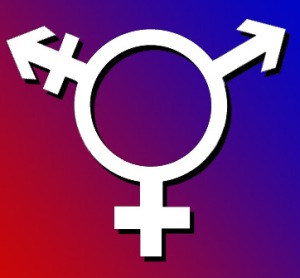 
Alan Cumming on Trans Facts
Erica Deuso Makes Trans History: Elected
as Pennsylvania Mayor
These Cities are Stepping Up to
Provide Sanctuary to Trans
People
AOC Assures Trans Kids They’re Not to
Blame: You are Fine Just the Way You Are
Texas Becomes 20th State with a
Transgender Bathroom Law
Barack Obama Shares His Advice for
Changing Hearts and Minds on Trans Rights
Which State Has
the Most Transgender People?
SPLC: Why Gender Affirming Care is
Necessary
Over 100,000 Take to London Streets for
Record-Breaking Trans Pride
Puberty Blockers Ban Causing Extensive
Harm to Trans Youth, Study Shows
Trump Demonizing Trans People is a Deliberate
Distraction
Airyn De Niro Is Ready to Be Seen on Her
Own Terms
Trans Journalist Erin Reed Gushes About
Co-Parenting with Zooey Zephyr
As Trans People, We're Going To Face More
Challenges: Here Are Ways To Get Support
Trans Youth Healthcare Crisis: Australia
and USA
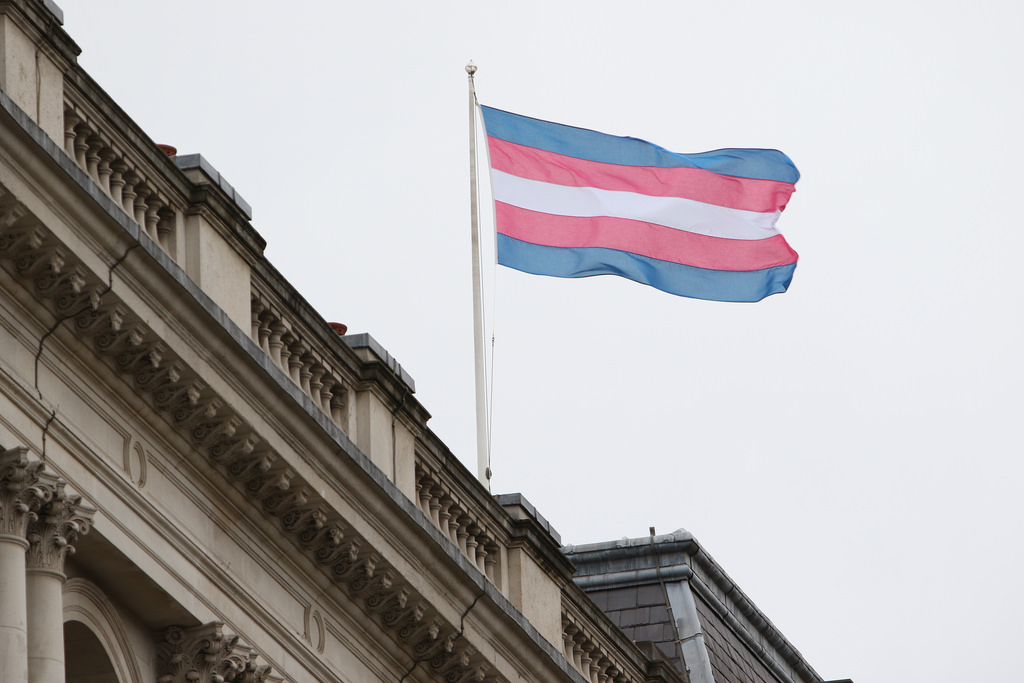
Transgender Celebrities
|
Caitlyn Jenner - Athlete
Chaz Bono - Activist
Janet Mock - Magazine Editor
Kate Bornstein - Author
April Ashley -
Model
Kim Petras - Singer, Songwriter
Jazz Jennings - Activist
Danica Roem - Politician
Elle
Hearns - Activist
Indya Moore - Model
Wendy Carlos - Musician
Deirdre McKloskey - Economist
Ky Allums - Athlete
Carmen Carrera - Model
Michaela Jaé Rodriguez - Actor
Misty Snow - Politician
Lynn Conway - Engineer
Raquel
Willis - Activist
Caroline Paige - Pilot
Teddy
Geiger - Musician
Daniela Vega - Actor, Singer
Buck
Angel - Performer, Educator
Angela
Clayton - Physicist
Mya Byrne - Musician
Christine Jorgensen - Activist
Tracey Norman - Model
Stu Rasmussen - Politician
Cecilia Gentili - Activist (NY)
 |
Laverne Cox - Actor
Sarah McBride - Activist
Elliot Page - Actor
Kimi Cole - Politician
Jeanne Hoff-
Psychiatrist
Angelica Ross - Entrepreneur
Alan L Hart - Physicist, Researcher
Angela Ponce - Model
Chelsea Manning - Soldier
Trace Lysette -
Actor
Genny Beemyn - Educator
Alex Consani -
Model
Marvia Malik -
Pakistan TV News
Anchor
Jess Herbst - Politician
Nicole Maines - Actor
Laura Jane Grace - Punk Rock Musician
Mercury Stardust - Trans Handy Ma'am
Zooey Zephyr -
Montana State
Legislator
Jamie Clayton - Model, Actor
Mira Bellwether
- Activist,
Author, Educator
Renee Richards - Athlete
Stacie Lawton -
Politician
Carla Antonelli
- Spanish
Actress,
Politician
Margaret Stumpp - Business Executive
Erika Ervin - Model, Trainer, Actor
Kataluna Enriquez - First Trans Miss USA
Contestant
Kylar Brody - Activist
Rachel
Crandall-Crocker
- Founder,
International Trans
Day of
Visibility
 |





Celebrities Who Changed Their
Gender And Are Enjoying It
Groundbreaking and Heartwarming
Moments from Trans and
Non-Binary People
Gender-Affirming Surgeon Wishes
Politicians Would Listen to
Trans Patients
Looking for Home:
Some Transgender People Find
Community in Unexpected Places
How To Support A
Loved One If They Come Out As
Trans
Info:
Transgender
Celebrity Spotlight:
Genderqueer, Non-Binary, Transgender
Trans and Gender Non-Conforming Identities
How Zooey Zephyr, Montana's
First Trans Legislator, Became a
National Celebrity
Kids Help Line: What is Gender Identity?
Roberta Close:
Brazilian Trans Model
First Transgender Mayor Elected in France
Sex Assigned at Birth vs Gender Identity
Transgender Icons That Have Shaped
History
Info:
Gender Expression
Television’s Most Trailblazing
Transgender Characters
Transgender
Celebrities Who Broke Barriers
Erica Deuso - Politician
Stef Sanjati - YouTuber
Rosemay Ketchum - Politician
Jenny Boylan - Author, Educator
Glenn Copeland - Composer
Roberta Close -
Model (Brazil)
Monica Roberts - Journalist
Tommy Dorfman - Actor
Lia Thomas - Olympic Swimmer
Yasmin Finney - Actor
Angelica Ross -Broadway Actor
Sophie Labelle - Cartoonist
Dylan Mulvaney - Tik Tok Influencer
Allyson Robinson - Army Officer
Jenna Talackova
- Model
Carla Antonelli
- Spanish
Politician
Rikkie Valerie
Kolle - Miss
Netherlands
Hunter Shafer -
Actor (Euphoria)
Bel Priestley -
Actor (Heartstopper)
Hari Nef - Actor
(Assassination
Nation)
Giselle Byrd -
Director
(Theatre Co.)
Karla Sofía
Gascón - Actor (Emilia
Pérez)
Lilly Wachowski
- Film Director
(Matrix)
Alex Consani -
Fashion Model
Munroe Bergdorf
- Model
Andrea
Jenkins - Politician
Airyn De Niro -
Actor, Model,
Therapist
Roberta Cowell -
Pilot,
Motorsport Racer
 |
Harper Steele -
Television
Writer (SNL)
Rodina Singh -
Filmmaker
Nikki Sinclaire
- British
Politician
Yosha Iglesias -
International
Chess Master
Leelah Alcorn - Artist
Ethel Cain -
Musician
Marie Cau - French Politician
Caroline "Tula"
Cossey - Bond
girl, and first
trans model in
Playboy
Maxine Feldman - Singer, Songwriter
Rachel Levine - Physician
Rikkie Valerie
Kolle - Model
(Miss
Netherlands)
Sophie Wilson - Computer Scientist
Leo Sheng - Actor
Yosha Iglesias -
French Women’s
Chess Champion
Morgan Davies -
Actor
Celeste Yim -
Television
Writer (SNL)
Aaryn Lang
- Media Personality, Activist
Candis Cayne - First trans woman with major role on primetime TV
Chevalier d’Éon - French Spy (18th Century)
Jackie Shane - Canadian Soul and R&B Singer
Angela Morley - Music Composer,
Conductor
Marina Machete - Miss Portugal
Mary Malone - Actor (Dr. Who)
Margo Fairchild - Actor (Tales
of the City)
Zion Moreno - Actor (Gossip
Girl)
Bella Bautista - First Trans
Miss Georgia USA Contestant
Qatrisha Zairyah - First Trans
Woman Miss Universe Singapore
Finalist
Vivian Jenna Wilson - Elon
Musk’s transgender daughter
 |



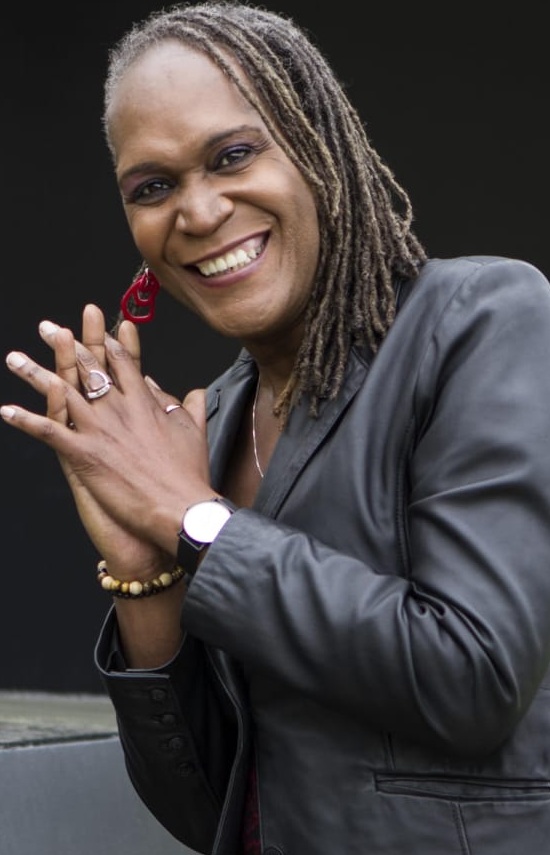

Trans Day of Visibility
Anna Akana: Discussing Trans Surgery
TED Talk: Why Are Trans People Everywhere?
Airyn De Niro Is Ready to Be Seen on Her
Own Terms
Annette Benning: My Remarkable Trans Child
Sade to Release New Song Dedicated to Her Trans Son
Marlon Wayans, Who Has a Trans Son, Trolls Bigots with
Pride Post
Heartstopper Star Bel Priestley
Hopes to be Role Model for Other
Trans People
PBS Video: Transgender Issues
Lisa Ling and EJ Johnson Tackle Gender Identity
Trans Folks Who Are Loud, Proud, and Making the World a
Better Place
Video Journey: My 20 Year FTM Timeline
Gender and Gender Identity
Groundbreaking and Heartwarming
Moments from Trans and Non-Binary
People
List: Famous Transgender People
Music Video: I Am Samantha
What Age Do Transgender Kids Know They’re
Trans?
Most Inspiring Transgender Celebrities
Television’s Most Trailblazing
Transgender Characters
Celebrities Who Changed Their Gender
And Are Enjoying It
Video: Soldier Returns
Home and Meets Trans Daughter for the
First Time
Transgender Celebrities
Who Broke Barriers
Sylvia Rivera and Marsha P Johnson: Street Transgender
Action Revolutionaries




Vintage
Trans
Myra Breckinridge
In 1970,
sultry sex symbol Raquel Welsh appeared on The Dick Cavett Show to plug her new film, Myra Breckenridge.
Ahead of its time, Myra Breckenridge told the story of a
transgender person who undergoes a "sex change
operation." This topic was still rather taboo in 1970,
yet Raquel Welsh was trying her best to discuss it in a
non-biased way when rocker Janis Joplin, who appeared on
the same episode of the TV talk show, piped in to
complain that she couldn’t follow the storyline of the
movie because it “kept changing.” Without missing a
beat, Welsh retorted, “That’s because the whole movie is
about change.”
Wendy Carlos
Wendy Carlos (born Walter Carlos,
1939) is a transgender American musician and composer
best known for her electronic music and film scores.
Carlos came to prominence with Switched-On Bach (1968),
an album of music by Johann Sebastian Bach performed on
a Moog synthesizer, which helped popularize its use in
the 1970s and won her three Grammy Awards. She composed
the musical scores for A Clockwork Orange (1971), The
Shining (1980), and Tron (1982). In 1979, Carlos raised
public awareness of transgender issues by disclosing she
had been living as a woman since at least 1968, and in
1972 had undergone sex reassignment surgery.
Lili Elbe
Lili Elbe (1882-1931) was born
Einar Wegener in Vejle, Denmark and died in Dresden,
Germany. Elbe was a Danish painter who was assigned male
at birth, experienced what is now called gender
dysphoria, and underwent the world's first documented
sex reassignment surgery. Elbe lived nearly her whole
life as a man. She wrote a book about her life,
entitled,
Man into Woman
(1931).
The story
of her transition has since been retold in The Danish
Girl (2000), a novel by David Ebershoff, and a major
feature film by the same name (2015) starring Eddie
Redmayne.
Small
Pennsylvania
Town Elected the
State's
First-Ever Out
Transgender
Mayor
Transgender Celebrities Who Broke
Barriers
Arienne Childrey Becomes Ohio's First
Transgender City Council Member
Study Finds Gender-Affirming Care for Teens is Rare Amid
Debate Over Access
Karla Sofía Gascón Gives Emotional Speech as 'Emilia
Pérez' Wins Golden Globe
Transgender Americans Lost to Violence in 2024
Gender-Affirming Care: What It Is and Why It's Necessary
Gender-Affirming Surgeon Wishes Politicians Would Listen
to Trans Patients
Transgender Woman Makes it to Miss Universe Singapore
Final for First Time in History
Empowered Trans Woman
Marlon Wayans, Who Has a Trans Son, Trolls Bigots with
Pride Post
‘Emilia Pérez’ Star Karla Sofía
Gascón Becomes First Transgender
Actress to Win at Cannes
John Lithgow: Playing a Trans
Character

The Joy of
Being Transgender
Authenticity and Freedom
Embracing
one's true identity is a journey of
self-discovery and acceptance. For
transgender individuals, this path can
be particularly transformative, leading
to an overwhelming sense of joy and
liberation. Being transgender goes
beyond societal norms, breaking free
from the constraints of assigned gender
roles, and opens up a world of
possibilities for personal growth and
understanding. The joy of being
transgender is in the empowerment and
fulfillment that comes from living
authentically.
The journey of self-discovery for
transgender individuals often starts
with introspection and reflection on
their identity. Recognizing and
embracing one's true gender identity can
be a moment of revelation and relief.
The process of self-discovery allows
transgender individuals to shed the
weight of societal expectations and
external pressures, leading to a
profound sense of joy. This newfound
self-awareness can lay the foundation
for a life filled with genuine
happiness.
Being true to oneself is a fundamental
aspect of living a joyful life. For
transgender individuals, embracing their
authentic gender identity represents a
courageous act of self-acceptance. The
decision to live openly and
authentically brings a sense of freedom
that can only be comprehended by those
who have experienced it. Breaking free
from the constraints of assigned gender
roles and societal expectations
liberates the individual to express
themselves fully, leading to a deep
sense of joy.



Trans Day of Visibility
Anna Akana: Discussing
Trans Surgery
Being Transgender at Work
Info: Transgender
How To Support A Loved One If They Come
Out As Trans
Two Teens
Charged in Death
of Transgender
TikTok
Personality
Brianna Ghey
Learn With Love:
Trans Stories
Most Inspiring
Transgender Celebrities
Virginia Democrats
Kill Six Proposed Anti-Trans Bills
Amber McLaughlin, First Openly Trans Person Executed in US,
Dies by Lethal Injection
The Euphoria of Elliot Page
Transgender Man and Former Athlete Opens
Up About What It Means to Be ‘A Real
Man’
Dylan Mulvaney Has
New Passport with Female Designator
Gender Transition
Tips to Help Embrace Euphoria and
Live Your Best Trans Life
Trans Girl Wins Irish
Dance Contest
TED Talk: Trans People Have Always Been
Here
Television’s Most Trailblazing
Transgender Characters
Video: Soldier Returns
Home and Meets Trans Daughter for the
First Time
Connection and Community
The joy of being transgender extends
beyond personal growth and authenticity.
It extends to the vibrant and supportive
community that exists worldwide. Finding
like-minded individuals who share
similar experiences can be an empowering
and affirming experience. Through
support groups, social networks, and
pride events, transgender individuals
find a sense of belonging and
solidarity, fostering friendships and
connections that are both meaningful and
uplifting.
Transgender individuals often face
unique challenges, including
discrimination and prejudice. However,
the joy of being transgender also arises
from the ability to advocate for change
and foster understanding. Many
transgender individuals find empowerment
in sharing their stories, educating
others, and contributing to the broader
fight for LGBTQ rights. The pursuit of
equality and acceptance brings a sense
of fulfillment and purpose that
amplifies the joy of living as a
transgender person.



Redefining Gender
Transgender individuals play a crucial
role in reshaping societal perceptions
of gender. By challenging the
traditional binary view of gender, they
promote a more inclusive and diverse
understanding of human identity. The joy
of being transgender lies in being a
catalyst for progress, transforming the
cultural landscape and paving the way
for a more accepting and compassionate
society.
The joy of being transgender arises from
the journey of self-discovery,
authenticity, and empowerment. Embracing
one's true gender identity enables
individuals to live a life filled with
happiness and fulfillment. Transgender
individuals find joy in connecting with
their community, advocating for change,
and contributing to the redefinition of
gender norms. As society continues to
evolve, celebrating and supporting the
transgender experience is essential in
creating a world where everyone can
embrace their true selves and find joy
in being who they are.
Annette Benning: My Remarkable Trans
Child
Looking for Home: Some
Transgender People Find Community in
Unexpected Places
Elliot Page Absolutely 100% Knew He
Was a Boy as a Toddler
Breathtaking Portraits of Trans Men That Truly Inspire
Trans Folks Who Are Loud, Proud, and Making the World a
Better Place
Survey: 5 Percent of Young Adults Identify as Trans or
Nonbinary
Kimi Cole Aims to Be First Trans Politician to Win
Statewide Race
Senators Urge Biden Admin for Guidance on Mental Health
of Transgender Youth
Transgender People Report Years of
Battles for Health Insurance Coverage
Most Inspiring Transgender Celebrities
Voice Training Is a Medical Necessity for Many
Transgender People
Trial Begins in
Florida on Trans Care Bans
Esquire Essay: The
Euphoria of Elliot Page
Info: Transgender



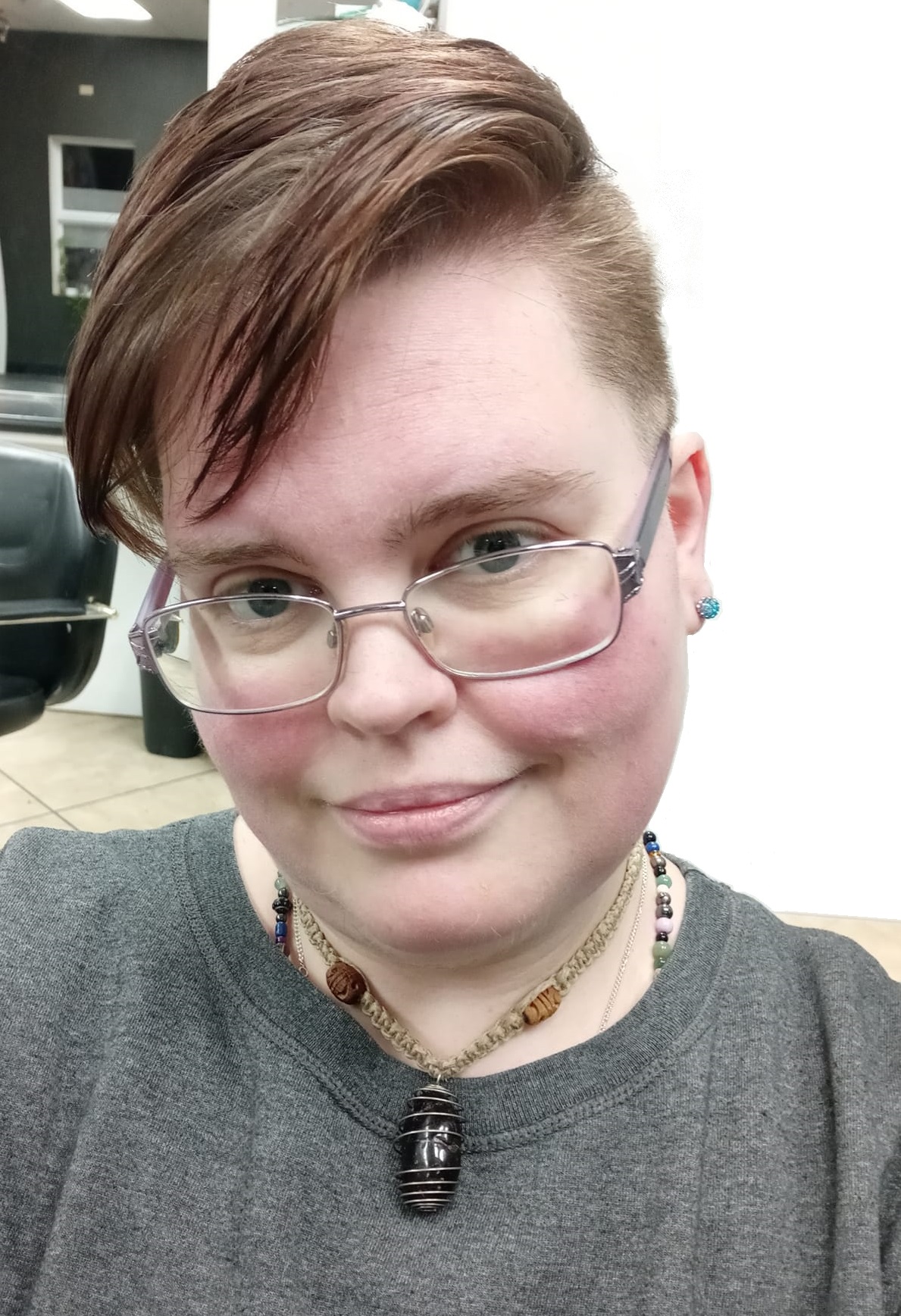
New Study Debunks Myth that
Kids Become Trans Through Social Contagion
Scientists
say any claims that people are becoming trans just to
fit in does not hold up to scrutiny
Over the past four years, opponents of transgender
rights and protections have pushed a theory called
“rapid onset gender dysphoria,” or ROGD, asserting that
more young people are publicly identifiying as trans due
to “social contagion.” "Trans people have long known
this theory to be completely false, but now, a new study
has finally proven it for good."
A study published Wednesday in the journal Pediatrics is
the latest to demonstrate how the numbers just don’t
line up in ROGD’s favor. Scientists analyzed data from
the CDC’s 2017 and 2019 Youth Risk Behavior Survey in 16
states, looking particularly at the ratio of trans and
gender-diverse youth who were assigned female at birth
as opposed to those assigned male. The ROGD theory
posits that trans identification is exploding
specifically among AFAB youth, who are being preyed upon
by “gender ideology” — but this analysis of nearly
200,000 adolescents disproves that hypothesis.
Far from rising, the number of trans and gender diverse
youth identified in the survey actually dropped
significantly between 2017 and 2019, falling from 2.4%
to 1.6%. And while the ratio of assigned-male to
assigned-female trans youth did shrink, going from 1.5:1
to 1.2:1 over the two years analyzed, researchers found
the numbers actually changed because there were fewer
transfeminine youth in the latter survey, not more
transmascs.
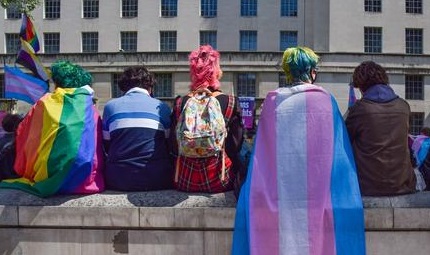
Gender-Affirming Care: What It Is
and Why It's Necessary
Trans Boy: I Started Living My Life Instead of Just
Surviving
Watching My Son Become My Daughter
Me
As A Girl: Transition Timeline
TED Talk: Trans People Have
Always Been Here
Personal Insight: Nurse
Who Cares for Gender Surgery Patients
Odd Things Cis People Say to Trans People
James: Starbucks Trans Ad
Trans Ask: What Do You Transition to if
You are Non-Binary?
At Least 33
Transgender and Gender-Nonconforming
People Killed in the Past Year,
Report Finds
Tennessee Elects its First Transgender Lawmaker
How Zooey Zephyr, Montana's First Trans Legislator,
Became a National Celebrity
California Becomes First State
to Establish Transgender History
Month
Elliot Page: Stunning
Esquire Essay About His Identity,
His Career and More
Proponents of ROGD, including JK Rowling and Joe
Rogan, have also claimed that transness is a “social
contagion” because young people are using trans
identification as a way to escape homophobic bullying.
There’s a lot of misconceptions to unpack in that one
sentence, but the Pediatrics study addresses the most
vital one: once again, it was found, bullying and
suicidal ideation rates were both higher among trans
youth than their cis-identified peers, making the ROGD
claim nonsensical.
“The hypothesis that transgender and gender diverse
youth assigned female at birth identify as transgender
due to social contagion does not hold up to scrutiny and
should not be used to argue against the provision of
gender-affirming medical care for adolescents,” Dr. Alex
S. Keuroghlian, one of the study’s senior authors, said
in a statement. Lead author Dr. Jack Turban concurred,
calling the idea that trans youth transition to escape
social stigma “absurd.”



Dylan Mulvaney on
Transphobia: My Womanhood is All I
Need to Keep Going
Trans and Nonbinary People on Bodies,
Desirability, and Revolutionizing Beauty
Tommy Dorfman Comes Out as
Trans
Why Tommy Dorfman Did Not Transition
Sooner
Trans Educator: Most Commonly Asked Questions I Get
About Trans Youth
Lia Thomas: First Transgender Woman to Win NCAA
Championship
MJ Rodriguez Becomes 1st Transgender
Actor to Win a Golden Globe Award
“The damaging effects of these unfounded hypotheses in
further stigmatizing transgender and gender diverse
youth cannot be understated,” Turban stressed. “We hope
that clinicians, policymakers, journalists, and anyone
else who contributes to health policy will review these
findings.”
Of course, these findings are not the first to indicate
that ROGD is junk science. The theory was first floated
in 2018, and problems with the study that justified it
were obvious from the start. Dr. Lisa Littman, a board
member of the “gender critical” group Genspect,
published a survey of less than 300 parents of trans
youth recruited from openly anti-trans communities like
the UK-based TERF-y site Mumsnet who provided
testimonials supporting Littman’s hypothesis. That the
paper was immediately retracted or that Littman herself
has misrepresented her own data haven’t prevented these
“findings” from becoming enmeshed on the right, though,
in part because anti-trans dogma isn’t just about
gender.
We’d like to believe that this will finally put
Littman’s harmful falsehoods to rest, but sadly,
truth-telling is not a hallmark of the reactionary
right. Hopefully this can at least reassure some trans
youth that they’re not monsters or dupes, and that their
identities deserve respect — even if some insist on
screaming otherwise.
[Source: Samanthan Riedel, Them, August 2022]




Elliot Page Says
Testosterone Journey and Finding
Trans Community Drastically
Changed His Life
Looking for Home:
Some Transgender People Find
Community in Unexpected Places
Kirstie Allsopp’s Pro-Trans Views
are Backed Up by Science and
Facts
Police Officer Defends Trans Daughter Against Anti-Trans Legislation
Biden Reverses Trump's
Transgender Military Ban
Info: Transgender
Sylvia Rivera and Marsha P Johnson: Street Transgender
Action Revolutionaries
Elliot Page Absolutely 100% Knew He Was a Boy as a Toddler
New Poll: 73 Percent of
People Support Trans Kids in Sports
Trans Kids Purple Rainbow
Television’s Most Trailblazing Transgender Characters
How School Systems, Educators and Parents
Can Support Transgender Children
DotGay Dictionary: What is Gender
Identity?
Jeopardy Game Show
Contestant: First Out Transgender Winner
Killing of Transgender
Americans at All Time High
Rebekah's Story
Trans Bathroom Debate
Myths and Misconceptions Surround the
Issue
A bathroom bill is the common name for
legislation or a statute that denies
access to public toilets by gender or
transgender identity. Bathroom bills
affect access to sex-segregated public
facilities for an individual based on a
determination of their sex as defined in
some specific way, such as their sex as
assigned at birth, their sex as listed
on their birth certificate, or the sex
that corresponds to their gender
identity. A bathroom bill can either be
inclusive or exclusive of transgender
individuals, depending on the
aforementioned definition of their sex.
Single occupant unisex public toilets
are one option to avoid this
controversy.

Bathroom Legislation
More States Consider Bills Limiting
Which Bathroom Trans People Can Use
Bathroom Ban Laws
Facts and Myths: Transgender Bathroom
Debate
Proponents of the bills argue that such
legislation is necessary to maintain
privacy, protect what they claim to be
an innate sense of modesty held by most
cisgender people, prevent voyeurism,
assault, molestation, and rape, and
retain psychological comfort. Critics of
the bills argue that they do not make
public restrooms any safer for cisgender
people, and that they make public
restrooms less safe for both transgender
people and gender non-conforming
cisgender people. Additionally, critics
claim there have been no cases of a
transgender person attacking a cisgender
person in a public restroom. The
American Medical Association, the
American Psychological Association, and
the American Academy of Pediatrics are
all opposed to bathroom bills.
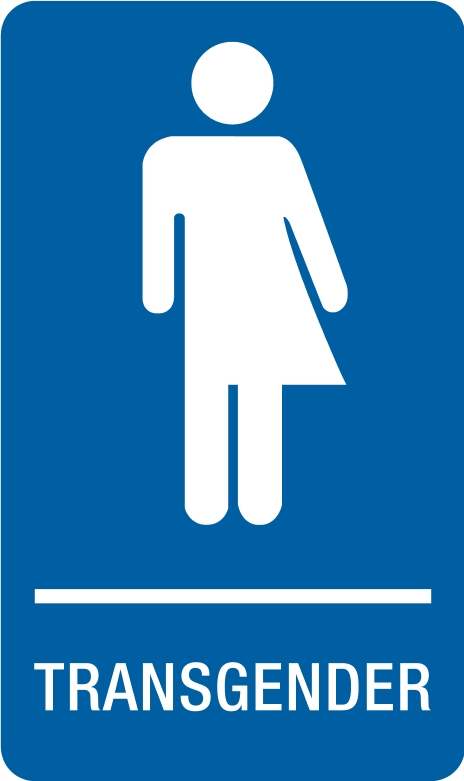

TED Talk: Trans People Have Always Been
Here
Television’s Most Trailblazing
Transgender Characters
Gender-Affirming Surgeon Wishes
Politicians Would Listen to Trans
Patients
Gender-Affirming Care: What It Is and
Why It's Necessary
Times When Trans Characters Were
Actually Played by Trans Actors
School Officials
Prevent Trans
Teen from
Attending Her
Own Graduation
How New Mexico
Quietly Became a
Refugee State
for Trans People
3
Generations of
Trans Americans
Reflect on What
Has (and Has
Not) Changed
Biden Issues
Transgender Day
of Visibility
Proclamation
Dylan Mulvaney
on The Drew
Barrymore Show
Trans Singer Kim
Petras Makes
Grammy History
Laverne Cox:
Trans People Are
Exhausted by
Anti-Trans
Legislation
Esquire Essay: The
Euphoria of Elliot Page
First Trans
Woman Crowned
Winner of Miss
Netherlands
Video: I Am a Transgender Woman
Trevor Project: Raising a Trans Child
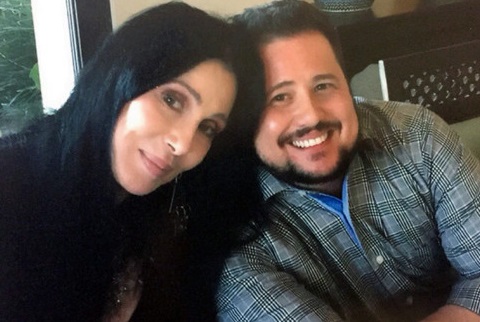


Trans
Athlete Debate
The trans
athlete debate isn't about fairness in sports. If it
were, there would be some degree of nuance. We'd be
looking at the variances in performance gaps between cis
men and women across different sports. We'd look at ages
where performance gaps widen. We'd hear about how one year
of suppressed testosterone in trans women is fine for
this sport, but that other sport needs two years because
of other factors unique to it. We'd hear
anything at all about trans men, people with DSD
(differences in sexual development aka intersex), and
non-binary athletes.
Instead,
we're getting blanket bans for all trans kids going back
to Kindergarten. Trans boys on testosterone are ignored,
with all the physical advantages they gain from actually
having testosterone puberty. There are no carve-outs for
trans girls on puberty blockers. This isn't because of
ignorance. Politicians are exposed to this information
in hearings, but they do not budge. So why this
approach?
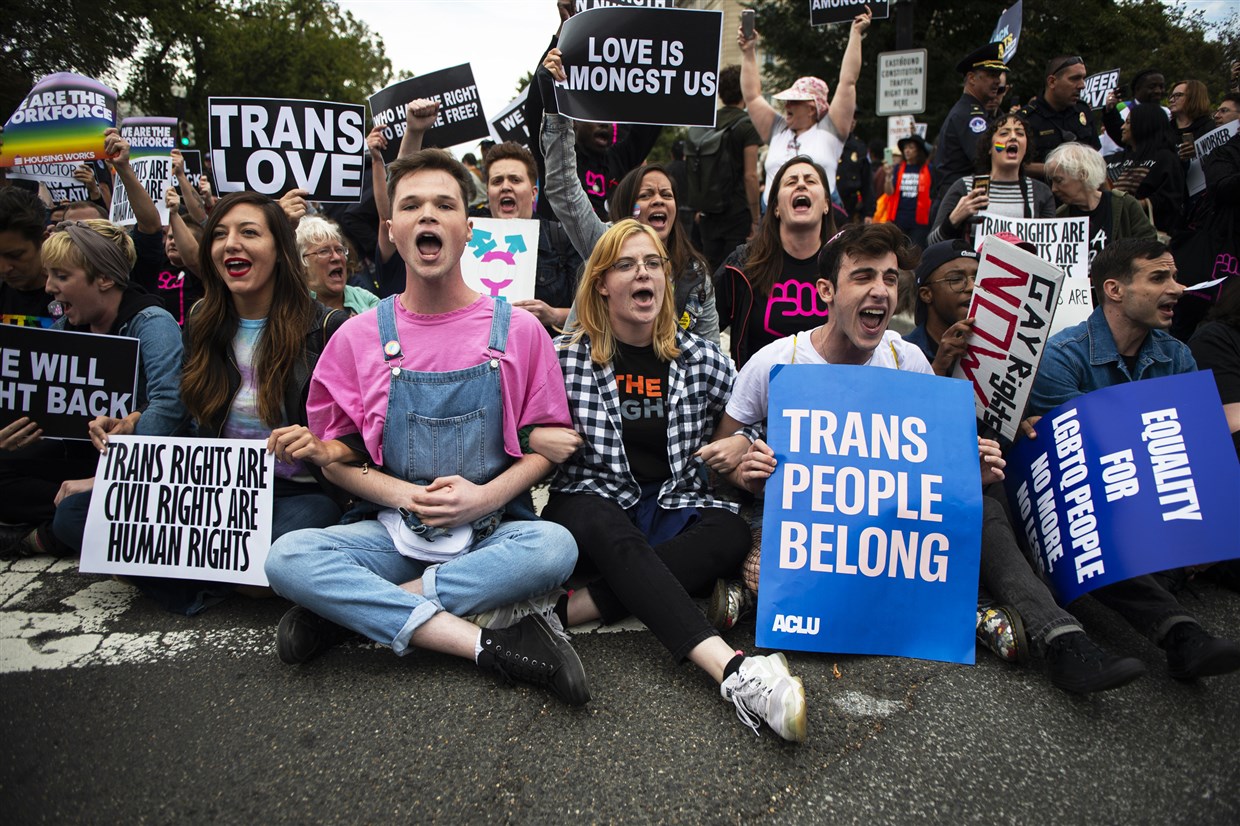


Me
As A Girl: Transition Timeline
South Dakota Becomes First State in 2022 to Pass
Anti-Trans Bill
MJ Rodriguez Becomes 1st Transgender
Actor to Win a Golden Globe Award
Biden Administration Promises to Protect
Trans Kids
We Stand With You: Honoring Transgender
Day of Remembrance
Trans Folks Who Are Loud, Proud, and Making the World a
Better Place
Trevor Project: Raising a Trans Child
Roberta Close: Brazilian Trans Model
CBS Sunday Morning: Growing Up Trans
Info:
Transgender
It's
simple. Providing any nuance at all requires first a
tacit acceptance of transgender identity. Forcing
trans boys on T to compete with cis girls is clearly not
about fairness. It's instead about refuting the boys'
gender.
This is why they always use loaded, misleading,
dogwhistle terms like "biological male." Social
conservatives muddy the waters of the debate,
disingenuously using competition framing to convince
people who would otherwise be reluctant to join them in
oppression of trans folk.
Don't fall for it. We can
have lively, nuanced debates about fairness in athletic
competition. But to get there, we must first accept a
fairly straightforward idea: Trans women are women.
Trans men are men. Non-binary people exist. That's
what this fight is actually about.
[Source: Alysandria Lynne Embergale]
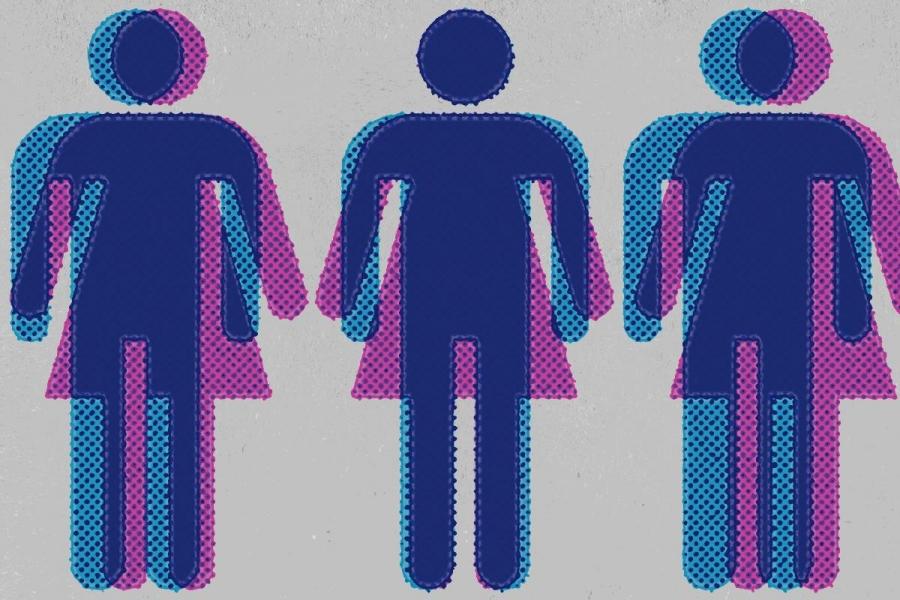
Anna Akana:
Discussing Trans Surgery
Transgender
Celebrities Who Broke Barriers
Trump Promises to Ban 'Men' From Women's Sports
Father of Trans Daughter
Testifies Against Trans Youth Athlete Ban
Anti-Trans Violence
Continues to Surge
Donald Trump Says He Would Ban Trans
Girls/Women From Sports if Reelected
Trans Kids: Target of
Conservatives' New Culture War
New Poll: 73
Percent of People Support Trans Kids in Sports
Record Number of Anti-Trans
Bills Introduced in States This Year
Trans Day of
Visibility
Transgender Day of Visibility Explained
82% of
Trans
Workers
Have
Experienced
Discrimination
or
Harassment
Trans Day of Visibility:
Celebrating Our Existence, Fighting for Our Rights
All About the Transgender Symbol
Transgender Icons That Have Shaped
History
Flavia Music Video: Them
Introduction to Transgender People
Rebekah's Story
Transgender by the Numbers
How many
transgender people are in the US? The numbers fluctuate
by state, but they also double the findings from a
decade ago. An estimated 1.4 million people (around 0.6
percent of US adults) identify as transgender, according
to a new study.
The fully
urban District of Columbia has the highest percentage of
adults who identify as transgender, with 14,550 people
(around 2.77 percent of the federal district's
population).


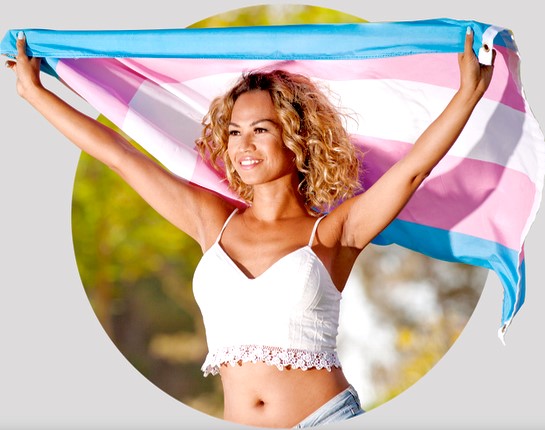
Several states have 100,000 or more people who identify
as transgender, according to the researchers.
California, with 218,000. Florida, with 100,300. Texas,
with 125,350.
The highest percentages of adults identifying as
transgender per state were found in Hawaii, California,
Georgia, and New Mexico (all with 0.8 percent) followed
by Texas and Florida with 0.7 percent, according to the
study.
Five states were found to have the lowest percentages of
transgender-identified adults, all with 0.3 percent:
North Dakota, Iowa, Wyoming, Montana, and South Dakota.
Survey: 5 Percent of Young Adults Identify as Trans or
Nonbinary
82% of Trans Workers Have
Experienced Discrimination or
Harassment
NPR Report: Transgender People in the US
Most Inspiring Transgender Celebrities
Advocate: Trans in Trumpland
Eddie Izzard: I'm Just
Trying to Create a Space for Myself
PBS News Hour: Puberty Blockers May Improve Health of Trans Adolescents
Valentina Sampaio: Interview With Trans Fashion Model
Why We Need Trans People in the US Military
Elliot Page Says Testosterone Journey and Finding Trans Community Drastically Changed His Life
All About the Transgender Symbol
Zander Keig: Latinx Trans Social Worker
Mom, I'm Not a Girl: Raising a Transgender Child
Voice Training Is a Medical Necessity for Many
Transgender People
Stories of Incredible Trans Youth
HRC: Little Known Historical Trans Facts
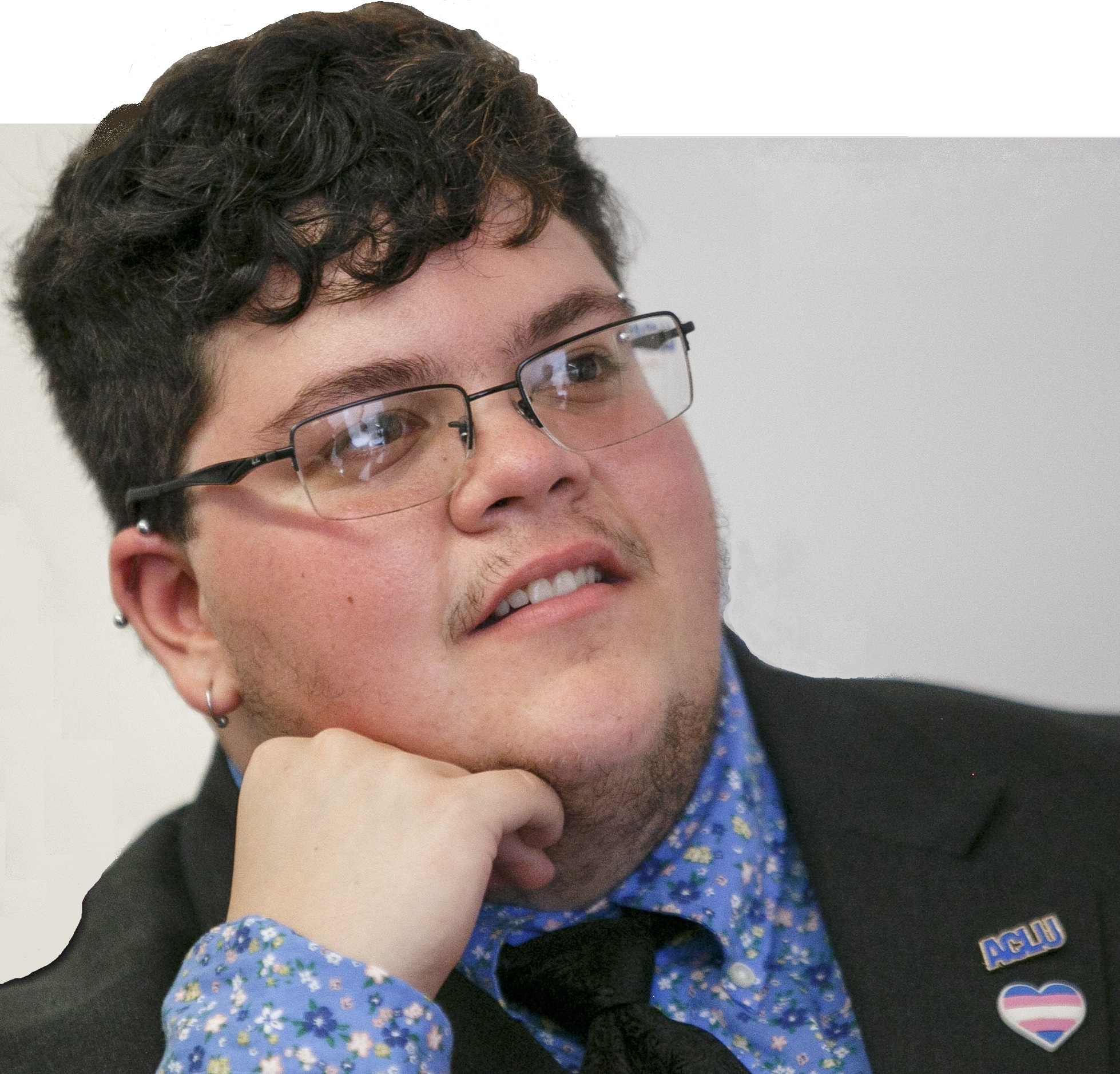



Understanding Gender Dysphoria
Complex Journey of Identity and
Acceptance
Gender dysphoria is a
multifaceted and complex
psychological phenomenon
experienced by some individuals
whose gender identity does not
align with the sex they were
assigned at birth. It is crucial
to recognize that gender
dysphoria is not a mental
disorder; instead, it is a
legitimate aspect of human
diversity and a valid expression
of gender identity. This essay
aims to explore the nature of
gender dysphoria, its impact on
individuals, and the importance
of promoting acceptance and
understanding.
Gender dysphoria is characterized
by a deep and persistent sense of
discomfort or incongruence
between an individual's
experienced gender identity and
their assigned sex at birth. This
dissonance can manifest as
feelings of distress, anxiety,
depression, or dissatisfaction
with one's physical appearance
and societal gender roles. The
struggle with gender dysphoria
can be profound and pervasive,
affecting various aspects of a
person's life, including
emotional well-being, social
interactions, and self-esteem.
Mira Bellwether Fought for a World
Where Trans Women Know Love and Pleasure
Transgender Day of
Visibility: Celebrating Our Existence and Fighting for
Our Rights
Celebrity Spotlight:
Genderqueer, Non-Binary, Transgender
Rebekah's Story
Trans Children Across US
Are Fighting For Their Lives (Again)
Arkansas Lawmakers Enact
Trans Youth Treatment Ban
Being Transgender
at Work
Sylvia Rivera and Marsha P Johnson: Street Transgender
Action Revolutionaries
Trans Youth Rights: Not
About Bathrooms or Women's Sports
Info: Transgender
Video: Young, Trans, and Looking for Love
Ten Myths About Transgender Love
Causes and Development
The exact causes of gender
dysphoria are not fully
understood, but research suggests
a combination of genetic,
hormonal, and environmental
factors may play a role in its
development. For many transgender
individuals, gender dysphoria
typically emerges during
childhood or adolescence when
they become increasingly aware of
their gender identity. It is
essential to emphasize that being
transgender is not a choice;
rather, it is a fundamental
aspect of a person's identity
that deserves respect and
understanding.
Living with gender dysphoria can
be an incredibly challenging
journey for those who experience
it. The internal conflict between
one's perceived gender identity
and physical body can lead to
feelings of alienation, social
isolation, and self-doubt. Many
transgender individuals face
discrimination, prejudice, and
stigma, which can exacerbate the
distress associated with their
gender dysphoria. As a result,
they may be more vulnerable to
mental health issues, including
anxiety and depression.
Addressing these challenges
necessitates a supportive
environment, access to affirming
healthcare, and the understanding
of family, friends, and society
at large.
Gender-Affirming Care: What It Is
and Why It's Necessary
Gender-Affirming Surgeon Wishes
Politicians Would Listen to Trans
Patients
Everything You Need to Know About These
Popular Transgender Celebrities
Simply Explained: What is Transgender?
Passing Tips for Trans Girls
Simple Animation
Explanation: Gender Dysphoria
How Gender Doulas Are Stewarding
Trans People Through Transition
Surprise: Laverne Cox Meets 25 Year Old Trans Man
Video: Young, Trans, and Looking for Love
ABC News: Transgender Parents
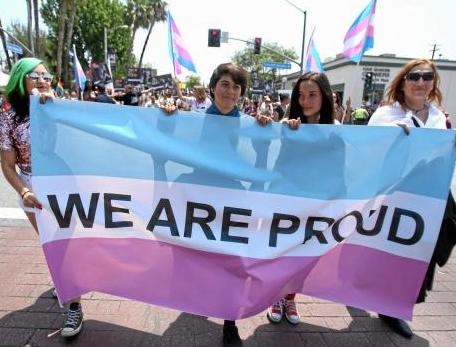
Sylvia Rivera and Marsha P Johnson: Street Transgender
Action Revolutionaries
Gender Therapist Advice: How Do I Know if I Am Trans?
Transgender Child: Mom,
I'm Not a Girl
Cory Booker: I have a Non-Binary "Niephew"
Trans Children Across US
Are Fighting For Their Lives (Again)
Music Video: I Am Samantha
Watching My Son Become My Daughter
Being Transgender at
Work
HRC Notes: The Bible and
Transgender Issues
New Study: Transgender Youth and Suicide Risk
Transgender People Killed in 2019
Treatment and Support
Gender-affirming care and support
are critical components of
addressing gender dysphoria.
Treatment options may include
individual or group therapy,
hormonal therapy, and, for some
individuals, gender-affirming
surgeries. The goal of these
interventions is to help
individuals align their physical
appearance with their gender
identity and alleviate the
distress associated with their
gender dysphoria.
To create a more inclusive and
compassionate society, it is
essential to promote acceptance
and understanding of transgender
individuals and their
experiences. This involves
challenging harmful stereotypes
and misconceptions about gender
diversity and actively supporting
policies and practices that
protect the rights and dignity of
transgender individuals. By
cultivating empathy and open
dialogue, we can foster an
environment where transgender
individuals feel seen, respected,
and valued for who they are.
Gender dysphoria is a complex and
profound aspect of human identity
that deserves empathy,
compassion, and respect. It is
crucial for society to recognize
and understand the challenges
faced by transgender individuals
and to support them in their
journey towards self-discovery
and self-acceptance. By fostering
an inclusive and affirming
environment, we can move closer
to a world where everyone is free
to express their gender identity
authentically and without fear of
discrimination or judgment.




Trevor Project/Daniel Radcliffe: Discussion with Trans
and Nonbinary Youth
Breathtaking Portraits of Trans Men That Truly Inspire
Kim Petras: Transgender Pop Star
Mira Bellwether
Fought for a World Where Trans
Women Know Love and Pleasure
List: Famous Transgender People
Trans Short Film: Masked
Woman Can’t
Contain Her Excitement After
Life-Changing Affirming Makeover
Natural Women Only: Trans Woman Barred From Beauty
Pageant
Video Journey: My 20 Year FTM Timeline
New York Times: Estimate of US Transgender Population
Doubles
Celebrity Spotlight:
Genderqueer, Non-Binary, Transgender
CBS Sunday Morning: Growing Up Trans
Our Trans Daughter: Jamie and
Rebekah
Expert Tips for Cis People
Who Want to Be Better Trans Allies
Kim Petras: Transgender Pop Music Star
How To Support A
Loved One If They Come Out As
Trans

Gender Dyphoria
"Dysphoria
truly
feels
like a
darkness
that
kind of
washes
over
you."
-Dylan
Mulvaney
Gender
dysphoria, or gender identity disorder (GID), is the
distress, discontent, and discomfort (and possible
impairment) a person experiences as a result of the sex
and gender they were assigned at birth. In these cases,
the assigned sex and gender do not match the person's
gender identity, and the person is considered to be
transgender.
According to Psychology Today, "gender dysphoria
(formerly gender identity disorder) is defined by
strong, persistent feelings of identification with the
opposite gender and discomfort with one's own assigned
sex that results in significant distress or impairment.
For instance, a person identified as a boy may feel and
act like a girl."
The American Psychiatric Association states that "gender
nonconformity is not in itself a mental disorder. The
critical element of gender dysphoria (or gender identity
disorder) is the presence of clinically significant
distress associated with the condition."
The main psychiatric approaches to treatment for persons
diagnosed with gender dysphoria are psychotherapy,
hormone replacement therapy, or sex reassignment
surgery.

 

Gender-Affirming Care: What It Is and Why It's Necessary
Quick Quiz: Do You Have Gender Dysphoria?
MTF: Insecurity and Dysphoria
Anna
Akana:
Discussing
Trans
Surgery
Gender-Affirming Hormones: Early Access Linked to Better
Mental Health
Trans and Gender Non-Conforming Identities
Video Tutorial: Transgender Basics
Transgender Police Officer
How Gender Doulas Are Stewarding
Trans People Through Transition
Am I Trans? Figuring Out
Your Gender
Transformation: Male to Female
Dwayne Wade's Trans Daughter Makes Red Carpet Debut
Wikipedia: Gender Identity
Transition Advice: Should I Start HRT?
Info: Transgender
Trans Boy: I Started Living My Life Instead of Just
Surviving
Our Trans Daughter: Jamie and
Rebekah
TED Talk: Trans People Have
Always Been Here
Sex Reassignment Surgery
The longest and most extensive study on the matter
recently found that out of 720 trans teenagers who
started hormone therapy half a decade ago, 98% were
still continuing their treatment today. Desistance and
detransition myths are lies designed to create a moral
panic and a transphobic backlash.
-Lancet, Journal of Child & Adolescent Health, Oct 2022
What used
to be called a sex change operation, is now called sex
reassignment surgery or SRS (also known as gender
reassignment surgery, gender confirmation surgery,
genital reconstruction surgery, gender-affirming
surgery, or sex realignment surgery). It is the surgical
procedure (or procedures) by which a transgender
person's physical appearance and function of their
existing sexual characteristics are altered to resemble
that socially associated with their identified gender.
It is part of a treatment for gender dysphoria in
transgender people. Related genital surgeries may also
be performed on intersex people, often in infancy.


Gender-Affirming Surgeon Wishes
Politicians Would Listen to Trans
Patients
Gender-Affirming Care: What It Is
and Why It's Necessary
Simple Animation
Explanation: Gender Dysphoria
Gender Affirming Surgery
Linked to Better Mental Health
Not all
transgender individuals seek to change their physical
sex. Changing your physical sex as an adult may be the
biggest change that a person could experience. It should
only be done with people that can only happily function
in the opposite gender role.
The American Society of Plastic Surgeons (representing
94% of all board-certified plastic surgeons in the
United States) prefers to call this procedure Gender
Confirmation Surgery or GCS. Another term for SRS is sex
reconstruction surgery, and more clinical terms, such as
feminizing genitoplasty or penectomy, orchiectomy, and
vaginoplasty, are used medically for trans women, with
masculinizing genitoplasty, metoidioplasty or
phalloplasty often similarly used for trans men.



People who pursue sex reassignment surgery are usually
referred to as transsexual.
The best known of these surgeries are those that reshape
the genitals (penis or vagina), which are also known as
genital reassignment surgery or genital reconstruction
surgery (GRS). It is also referred to as bottom surgery.
Top surgery, on the other hand, is surgery to the
breasts (augmentation or reduction).
Wikipedia: Sex Reassignment Surgery
Queer 101: Ask a Trans Man
Transitioning Is Not as Simple as
"Before" and "After" Photos Show
Passing Tips for Trans Girls
Our Trans Daughter: Jamie and
Rebekah
How To Support A
Loved One If They Come Out As
Trans
Trans Women Describe 'Gender Euphoria' Of
Finally Getting Breast Implants
Quick Quiz: Do You Have Gender Dysphoria?
Personal Insight: Nurse
Who Cares for Gender Surgery Patients
Woman Can’t
Contain Her Excitement After
Life-Changing Affirming Makeover


The
procedure has very high rates of success when it is
performed by responsible and experienced surgeons.
However with current surgical technology male to female
individuals usually are more satisfied with their
results than female to male. Modern sex reassignment
surgery has been performed for over 60 years. There are
on average 50 SRS procedures performed each week in
North America alone.
The meaning of "sex reassignment surgery" has been
clarified by the medical subspecialty organization, the
World Professional Association for Transgender Health (WPATH),
to include any of a larger number of surgical procedures
performed as part of a medical treatment for "gender
dysphoria" or "transsexualism". According to WPATH,
medically necessary sex reassignment surgeries include
"complete hysterectomy, bilateral mastectomy, chest
reconstruction or augmentation (including breast
prostheses if necessary), genital reconstruction (by
various techniques which must be appropriate to each
patient), and certain facial plastic reconstruction." In
addition, other non-surgical procedures are also
considered medically necessary treatments by WPATH,
including facial electrolysis.

 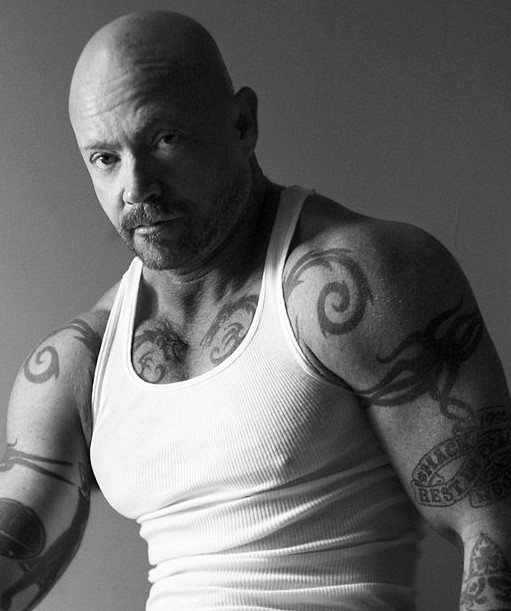

Trans Musicians You Should
Listen To
Girls to Men: Jamie's
Transgender Transition Timelapse
Music Video: I Am Samantha
Carmen Carrera: Things Trans
Women Want You To Know
Voice Training Is a Medical Necessity for Many
Transgender People
Dysphoria: What Does it Feel Like?
Gigi Gorgeous: Story of a Trans Woman
Trans Tips: Beginning
Transition
How Gender Doulas Are Stewarding
Trans People Through Transition
Changing the Way We Talk About Confirmation Surgery
Stef Sanjati: I'm Getting Sex Reassignment Surgery
MTF Transgender Journey: After Sex Reassignment Surgery
Ava Rose Trans Info: Transition Tips
Video Chat: How Hormones Changed My Body

Jazz Jennings: Battle Wounds From Gender Confirmation
Surgery
Carmen Carrera: Personal Thoughts on Being Trans
Transition Advice: Should I Start HRT?
Video Diary: I Got Top Surgery
I Know I'm Trans: Should I Transition? Part 1
Casey Blake Video: Transgender Transition Timeline
Washington Post: Here's How Sex Reassignment Surgery
Works
Boobs: Candid Talk About Top Surgery
TS Surgery Guide: Sex Reassignment Surgery
Gender-Affirming Hormones: Early Access Linked to Better
Mental Health



Surgical Procedures
--Feminizing
Genitoplasty for Trans Women (MTF) refers to surgeries
to alter or create female genitals, including the
clitoris, labia, and vagina.
--Bottom Surgery for Trans Women involves Penectomy
(surgical removal of the penis), Orchiectomy (surgical
bilateral removal of the testicles, and Vaginoplasty
(surgical construction/reconstruction of the vagina).
--Top Surgery for Trans Women involves Breast Augmentation
(surgical construction/reconstruction of chest/breasts
through use of implants).
--Masculinizing Genitoplasty for Trans Men (FTM) refers to
surgeries to alter or create male genitals, including
the penis, testicles, and scrotum.
--Bottom Surgery for Trans Men involves Metoidioplasty
(surgical modification/lengthening of the clitoris),
Phalloplasty (surgical construction/reconstruction of
the penis), and Scrotoplasty (surgical
construction/reconstruction of the scrotum).
--Top Surgery for Trans Men involves Mastectomy (surgical
bilateral removal of breasts).

Feminizing Genitoplasty Surgery
Masculinizing Genitoplasty Surgery
Penectomy Defined
How Gender Doulas Are Stewarding
Trans People Through Transition
Breathtaking Portraits of Trans Men That Truly Inspire
Breast Augmentation/Implants Defined
Sex Reassignment Surgery (Female to Male)
Sex Reassignment Surgery (Male to Female)
Trans Tips: Beginning
Transition
Gender-Affirming Surgeon Wishes
Politicians Would Listen to Trans
Patients
Boobs: Candid Talk About Top Surgery




I Know I'm Trans: Should I Transition? Part 2
Jazz Jennings: Battle Wounds From Gender Confirmation
Surgery
Personal Insight: Nurse
Who Cares for Gender Surgery Patients
Trans Women Describe 'Gender Euphoria' Of
Finally Getting Breast Implants
What is Sex Like for a Trans Woman Post-Op?
Gender Affirming Surgery
Linked to Better Mental Health
Voice Training Is a Medical Necessity for Many
Transgender People
MTF Transgender Journey: After Sex Reassignment Surgery
Transitioning Is Not as Simple as
"Before" and "After" Photos Show
Metoidioplasty Defined
Video Chat: How Hormones Changed My Body
Ava Rose Trans Info: Transition Tips
Woman Can’t
Contain Her Excitement After
Life-Changing Affirming Makeover

MTF Surgery: Vaginoplasty and Dilation
Vaginoplasty Explained
A vaginoplasty is a surgical procedure where a vagina is
created. It involves removing the penis, as well as the
testicles and scrotum, if an orchiectomy was not
previously performed. A vaginoplasty involves
rearranging the current tissue in the genital area to
create the vaginal canal and external genitalia, the
labia. To create the vaginal canal, the surgeon uses a
combination of the skin surrounding the existing penis
in addition to the scrotal skin. Sometimes, an
additional skin graft from the abdomen or thigh is
needed to achieve a full vaginal canal.
Dilation Explained
The purpose of dilation is to maintain the depth of the
new vagina. Dilation helps prevent contraction of the
skin graft inside vagina and also improves the
elasticity of vaginal wall in order to comfortably
accommodate penetrative sex. Dilation involves inserting
a lubricated dilator into the neo-vagina and keeping it
in there for a specified amount of time. The size of
dilator and the length of dilation time varies depending
on the surgeon's protocol and patient's needs. Your
surgeon will advise about the proper use and frequency
of post-op dilation and it's important to follow their
advice above all as it may be specific to your case.
Initially, one can expect dilation to take up about 2
hours per day, with the time and frequency decreasing
after you reach 18-24 months post-op.
Transgender Care: Vaginoplasty Procedures and Aftercare
MTF
Surgery: Imoportance of Dilation Following Vaginoplasty
Johns Hopkins Medicine: Vaginoplasty Questions Answered
Trans Surgery: MTF Frequently Asked Questions
Pelvic Hub: MTF Post-Surgery Care
MTF Personal Guide: Post-Op Dilation Tips




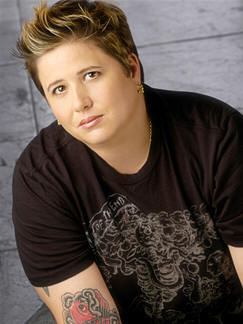
Types or Categories of Transgender
People
Many identities fall
under the transgender umbrella. The term transgender
refers to people whose gender identity is different from
their assigned sex. Often, transgender people alter or
wish to alter their bodies through hormones, surgery,
and other means to make their bodies as congruent as
possible with their gender identities. This process of
transition through medical intervention is often
referred to as sex or gender reassignment, but more
recently is also referred to as gender affirmation.
People who were assigned female, but identify and live
as male and alter or wish to alter their bodies through
medical intervention to more closely resemble their
gender identity are known as transgender men or transmen
(also known as female-to-male or FTM). Conversely,
people who were assigned male, but identify and live as
female and alter or wish to alter their bodies through
medical intervention to more closely resemble their
gender identity are known as transgender women or
transwomen (also known as male-to-female or MTF). Some
individuals who transition from one gender to another
prefer to be referred to as a man or a woman, rather
than as transgender.
Older
terminology usage differentiated between "transgender"
and "transsexual." In common usage a transgender
person was someone
whose gender identity is
different from their assigned sex, but chose NOT to
undergo full surgery. And a transsexual person was
someone
whose gender identity is different from
their assigned sex, but chose to undergo full surgery.
These days the term "transsexual" is generally not used
and respectful conversations should not focus on the
pre-op and post-op status of the trans person.
Feminism and Equality: What Trans Women Want You to Know
Video: The Science of Being Transgender
Transitioning at Age 70
Trans People: Come Out Come Out Wherever You
Are
Info: Sexual Identity
Video Message: I Am Transgender
Rebekah's Story
Male Celebrities That Were Born Female
Trans Sistas of Color Project
Genderquake (Part 1)
Info: Transgender
Woman Can’t
Contain Her Excitement After
Life-Changing Affirming Makeover
Glossary of Transgender Terminology
Video: Young, Trans, and Looking for Love
How Gender Doulas Are Stewarding Trans
People Through Transition
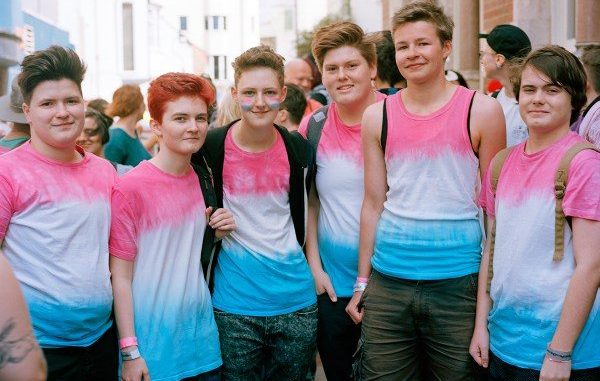
Gender-Affirming Care: What It Is and Why It's Necessary
Gender-Affirming Hormones: Early Access
Linked to Better Mental Health
Zander Keig: Latinx Trans
Social Worker
Dysphoria: What Does it Feel Like?
Transgender
Child: Mom, I'm Not a Girl
PFLAG: Our Trans Children
Watching My Son Become My Daughter
Simply Explained: What is Transgender?
Voice Training Is a Medical Necessity for
Many Transgender People
Meet a Transgender Homecoming Queen
Transgender Icons That Have
Shaped History
Gender
Affirming Surgery Linked to Better Mental
Health
HRC Notes: The
Bible and Transgender Issues
Girls to Men:
Jamie's Transgender Transition
Timelapse
Huff Post: Transgender News
Really Cool
Gender Neutral Bathroom Signs
Gender Revolution: Gavin
Grimm's Story
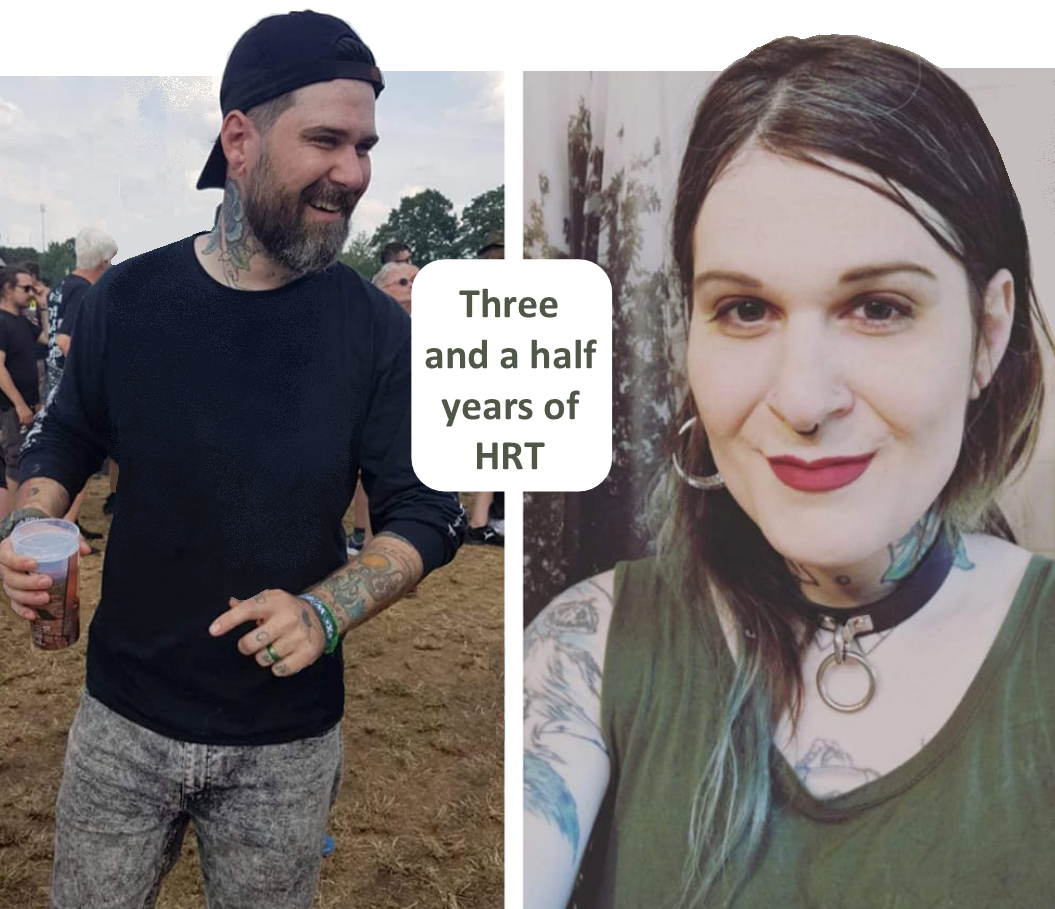
All About the Transgender Symbol
Expert Tips for Cis People
Who Want to Be Better Trans Allies
Eye Opening Facts About Being Transgender
Info: Gender Non-Conforming
Transitioning Is Not as Simple as
"Before" and "After" Photos Show
Info: Gender Non-Conforming
Janet Mock: Knowing Her
Gender Identity With Certainty
On the Front Lines: Battle for Trans Equality
Quick Quiz: Do You Have Gender Dysphoria?
PBS Video: Transgender Issues
Video: Trans 101 Basics
Trans Musicians You Should Listen To
Counselor Competencies for Working With Transgender
Clients
Gender Therapist Advice: How Do I Know if I Am Trans?
State by
State: Bringing Trans Men Together
Genderquake (Part 2)
People who cross-dress wear clothing that is
traditionally or stereotypically worn by another gender
in their culture. They vary in how completely they
cross-dress, from one article of clothing to fully
cross-dressing. Those who cross-dress are usually
comfortable with their assigned sex and do not wish to
change it. Cross-dressing is a form of gender expression
and is not necessarily tied to erotic activity.
Cross-dressing is not indicative of sexual orientation.
The degree of societal acceptance for cross-dressing
varies for males and females. In some cultures, one
gender may be given more latitude than another for
wearing clothing associated with a different gender.
The term drag queens generally refers to men who dress
as women for the purpose of entertaining others at bars,
clubs, or other events. The term drag kings refers to
women who dress as men for the purpose of entertaining
others at bars, clubs, or other events.

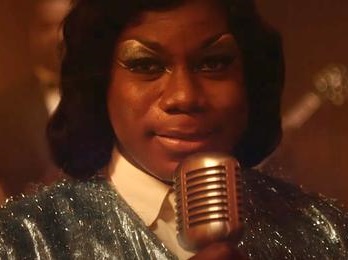


What Not to Say When Your Child Comes Out as Transgender
Trans Bathrooms: Nationwide Debate
Queer 101: Ask a Trans Man
Trans People Are Not a Threat to You
John Oliver: Transgender Rights
Trans Short Film: They Them
Sex Assigned at Birth vs Gender Identity
Ava Rose Trans Info: Transition Tips
Trans Kids Purple Rainbow
Info:
Preferred Pronouns
Erin Anderson: Beautiful MTF Transgender
If You Think Trans Bathroom Access Doesn't Matter...
Info: Gender Queer

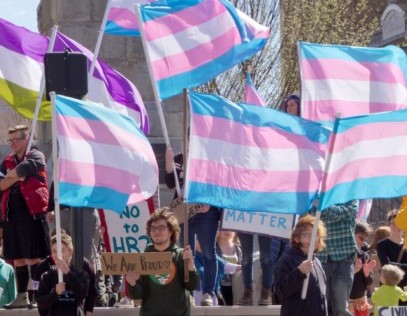 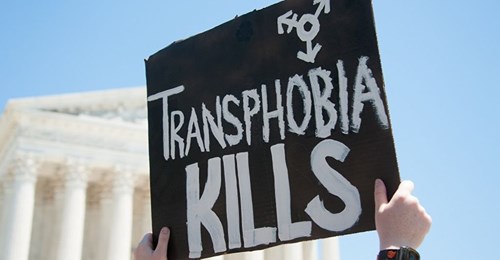
Trans Woman Responds to
Hate Mail and Violence
What it Means to Be Transgender/Gender Non-Conforming
Dwayne Wade's Trans Daughter Makes Red Carpet Debut
Transgender Q&A
Dysphoria: What Does it Feel Like?
Feminism and Equality: What Trans Women Want You to Know
Affirmations: Parents and Their Trans Kids
Ranker: Transgender Historical Figures
TED Talk: Gender is Not a Straight Line
Music Video: I Am Samantha
Expert Tips
for Cis People Who Want to Be Better Trans
Allies
Transgender
Child: Mom, I'm Not a Girl
Ranker: Famous Transgender People
Info:
Sex and Gender
Transgender History




Genderqueer is a term
that some people use who identify their gender as
falling outside the binary constructs of “male” and
“female.” They may define their gender as falling
somewhere on a continuum between male and female, or
they may define it as wholly different from these terms.
They may also request that pronouns be used to refer to
them that are neither masculine nor feminine, such as
“zie” instead of “he” or “she,” or “hir” instead of
“his” or “her.” Some genderqueer people do not identify
as transgender.
Other categories of transgender people include
androgynous, multigender, gender nonconforming, third
gender, and two-spirit people. Exact definitions of
these terms vary from person to person and may change
over time, but often include a sense of blending or
alternating genders. Some people who use these terms to
describe themselves see traditional, binary concepts of
gender as restrictive.
[Source: American Psychological Association]
Alan Cumming on Trans Facts
Trevor Project: Raising a Trans
Child
Carmen Carrera: Things Trans
Women Want You To Know
AOC Delivers
Powerful Statement in Support of
Trans Youth: I Stand With You
Trans Journalist
Erin Reed Gushes About
Co-Parenting with Zooey Zephyr
Name Assigned at Birth
Trans Man
Confronts Ben Shapiro
Info:
Deadnaming
Let’s Count the Lies in Trump’s
Latest Fact Sheet on Trans Youth
Trans People Need Allies (Even
Imperfect Ones) If We’re Going
to Survive this Administration
Transgender
Students Deserve to Learn and
Thrive in School
TED Talk: Why Are Trans People
Everywhere?
Amanda and Shaye
Which State Has
the Most Transgender People?

 

Respectful Language
Misgendering and deadnaming are offensive and hurtful
acts for transgender people. Using their preferred
pronouns and preferred name show respect.
People
who are transgender or gender variant experience
some sense of discomfort and dysphoria in having to deal
with the mismatch of their external presentation with
their internal feelings regarding being male or female.
To cope with those feelings… and to affirm their true
gender… they may choose a new name along with a new
pronoun that more accurately expresses their identity.
A male who identifies as female, for example, may, in
addition to wearing women’s clothing and make-up, choose
a female-sounding name and prefer to be addressed as she
and her.
 
Info: Transgender
Info:
Deadnaming
Info:
Preferred Pronouns
Info:
Cisnormativity
Info: Gender Non-Conforming
For people who are transgender or gender variant, the
simple act by another person of using a preferred
pronoun or preferred name can make a big difference. It
is a profound display of respect.
“Deadnaming” occurs when someone intentionally or
accidentally refers to a transgender person by the name
they used before they transitioned. “Misgendering”
occurs when someone intentionally or accidentally refers
to a transgender person by the pronoun they used before
they transitioned.
By the way, none of this is related to a transgender
person’s surgical status. And it is inappropriate to
talk about a transgender person’s pre-operative or
post-operative situation or how far they are in their
transition. A person is still considered to be
transgender whether they have undergone surgery or not.
TED Talk: Gender is Not a Straight Line
Sex Assigned at Birth vs Gender Identity
Trans Musicians You Should Listen
To
How the Mothers of Transgender Children
Are Changing the World
DotGay Dictionary: What is Gender
Identity?
Info:
Preferred Pronouns
TED Talk: Short History of Trans
People's Long Fight for Equality
First Transgender Mayor Elected in
France
Trans Women Describe
'Gender Euphoria' Of Finally Getting
Breast Implants
Transgender Language Primer
Simple Animation
Explanation: Gender Dysphoria
Transgender
Law Center
Changing: Trans Teen Music Video
Sex Assigned at Birth vs Gender Identity
Video: Trans 101
Mom, I'm Not a Girl: Raising a Transgender Child
What Not to Say When Your Child Comes Out as Transgender
Hormone Replacement
Therapy
Hormone
Replacement Therapy (HRT) is transgender hormone therapy
for transgender people which introduces hormones
associated with the gender that the patient identifies
with, notably testosterone for transgender men and
estrogen for transgender women. Some intersex people may
also receive HRT. Cross-sex hormone treatment for
transgender individuals is divided into two main types:
feminizing hormone therapy and masculinizing hormone
therapy. Feminizing hormone therapy in sex reassignment
therapy for transgender women. Masculinizing hormone
therapy in sex reassignment therapy for transgender men.
HRT can be administered in pill form or as an injection
to boost or replace the body's natural hormones. HRT is
also used by older cisgender women to relieve the
symptoms of monopause. Older cisgender men may also
benefit from HRT.
What Happens When Transgender People Start Hormone
Therapy?
Video: How HRT Changes a Transwoman's Body
Gender-Affirming Hormones: Early Access Linked to Better
Mental Health
Transition Advice: Should I Start HRT?
Guide to Hormone Therapy for Trans People
Video Chat: How Hormones Changed My Body
Info: Gender Non-Conforming
Gender-Affirming Care: What It
Is and Why It's Necessary
Video Talk: Can You Define Your Gender Identity?
PBS News Hour: Puberty
Blockers May Improve Health of Trans Adolescents
Being a Trans Kid is Hard
Gift Guide for Parents With Trans Kids
Transgender Expert Offers Tips to Parents
Video Story: My Friend is Transgender
On the Front Lines: Battle for Trans Equality
Changing: Trans Teen Music Video

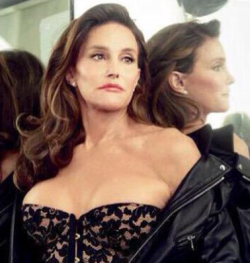


Transgender Terminology
Transgender - Often used as an umbrella term and refers
to those who transgress societal gender norms.
Generally, people who identify as transgender exhibit
some behavior or traits that fall outside of traditional
gender expectations. Specifically, however, the term
refers to a person whose gender identity differs from
what is culturally associated with their biological sex
at birth.
Transsexual - An old term referring to a transgender
person who undergoes full sex reassignment surgery. In
fact only some, but not all, transgender people wish to
change their bodies to be congruent with their gender
identity through sex reassignment surgery. This term
"transsexual" is considered outdated.
Gender Dysphoria - Discomfort with an assigned sex
and/or gender and/or the gender norms and roles
associated with either.
Sex Reassignment Surgery (SRS) – Term used by some
medical professionals to refer to a group of surgical
options that alter a person’s biological sex. Also
called Gender Confirmation Surgery (GCS). In most cases,
one or multiple surgeries are required to achieve legal
recognition of gender variance.
Huff Post: Broader Acceptance of Gender Non-Conformity
Slideshow: Transgender Resources
Trans and Gender Queer Over 50
On the Front Lines: Battle for Trans Equality
Info:
Deadnaming
Genderquake (Part 1)
Meet a Transgender Homecoming Queen
Counselor Competencies for Working With Transgender
Clients
Glee Video: If I Were a Boy
Changing: Trans Teen Music Video
Info:
Preferred Pronouns
Harris Poll: Growing Acceptance of Transgender Issues
Maya Henry: Things Not to Say to Trans Girls



Hormone Replacement Therapy (HRT) - Taking hormones to
enable one’s outward appearance to conform more closely
to one’s inner gender identity.
MTF – Abbreviation for male-to-female transgender person
or transwoman.
FTM – Abbreviation for female-to-male transgender person
or transman.
Top Surgery – Term refers to surgery for the
construction of a male-type chest or breast augmentation
for a female-type chest.
Bottom Surgery - Term refers to Sex Reassignment Surgery
involving genital reconstruction.
Boymoder -
Transwoman trying to present herself as male. In boy
mode. This "mode switching" is a temporary or
situational act typically done while in transition due
to society pressure, or for safety reasons, or when in
the presence of people who are not accepting.
Girlmoder
- Transman trying to present himself as female. In girl
mode. This "mode switching" is a temporary or
situational act typically done while in transition due
to society pressure, or for safety reasons, or when in
the presence of people who are not accepting.
Cisgender - Person whose gender identity and biological
sex (assigned at birth) align. The opposite of
transgender.




HRC Notes: The Bible and
Transgender Issues
Transgender Police Officer
Expert Tips for Cis People
Who Want to Be Better Trans Allies
Me
As A Girl: Transition Timeline
Transgender
Child: Mom, I'm Not a Girl
Documentary: Transgender Kids
HRC Notes: Little Known Historical Trans
Facts
Gift Guide for Parents With Trans Kids
Genderquake (Part 2)
State by State: Bringing
Trans Men Together
New Study: Transgender Youth and Suicide Risk
Gigi Gorgeous: Story of a Trans Woman
Queer 101: Ask a Trans Woman
Mom, I'm Not a Girl: Raising a Transgender Child
Odd Things Cis People Say to Trans People
National Transgender Discrimination
Survey
Gender Identity: A New Challenge for Schools
Relevant
Terminology
Androgyny
- Mixing of masculine and feminine characteristics.
Something that is neither masculine nor feminine.
Drag - Act of dressing in gendered clothing as part of a
performance. Drag may be performed as a political
comment on gender, as parody, or simply as
entertainment. Drag performance does not indicate
sexuality, gender identity, or sex identity. Old term:
Transvestism.
Intersex - Naturally occurring condition that affects
the reproductive and sexual system. Intersex people are
born with sex chromosomes, external genitalia, or
internal reproductive systems that are not considered
"standard" for either male or female. The existence of
intersex shows that there are not
just two sexes and
that our ways of thinking about sex (trying to force
everyone to fit into either male box or female) is
socially constructed.
Gender Bender/Gender Queer - Person who redefines or
plays with gender, or who refuses gender altogether.
People who bend/break the rules of gender and blur the
boundaries.
Cross Dresser - Person who enjoys dressing in clothes
typically associated with the other gender. Preferred
over the term “transvestite.” Cross dressers may be of
any sexual orientation.
Two-Spirited - Term for third-gender people that are
among many Native American and Canadian First Nations
tribes. It usually implies a masculine spirit and a
feminine spirit living in the same body. It is also used
by gay, lesbian, bisexual, transgender, and intersex
Native Americans to describe themselves. Two-Spirited
people have distinct gender and social roles in their
tribes. Some are counselors while others are medicine
persons or spiritual functionaries. They typically
possess skills in story telling, theater, magic,
hypnotism, healing, herbal medicine, ventriloquism,
singing, music and dance.
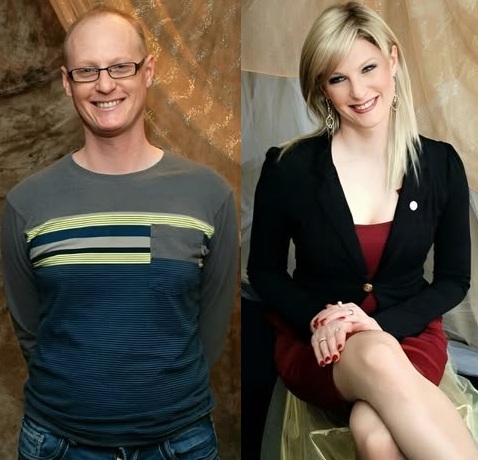


Genderbread Person
Transgender Language Primer
DotGay Dictionary: What is Gender
Identity?
Genderquake (Part 1)
Trans and Gender Non-Conforming Identities
Gigi Gorgeous: Story of a Trans Woman
Kovu Kingsrod: I'm a Soft
Boy and That's Okay
How the Mothers of Transgender Children
Are Changing the World
Info:
Cisnormativity
Trans Kids Purple Rainbow
Gender and Gender Identity
New Study: Transgender Youth and Suicide Risk
Info:
Deadnaming
Meet a Transgender Homecoming Queen
Queer 101: Ask a Trans Man
Video Story: 7 Year
Old Kai on Growing Up Trans
Gender-Affirming Hormones: Early Access Linked to Better
Mental Health

Puberty Blockers
Puberty blockers (puberty
inhibitors, puberty suppressors, hormone suppressors)
are a group of medications used to inhibit puberty. They
were originally used to treat children with precocious
puberty or other such early onset of puberty. Puberty
blockers are commonly used for the transgender
community. In this community, puberty blockers are used
to provide transgender youth with time to further
explore their identity, while halting the
development of their predisposed sex characteristics
caused by the onset of puberty.
The medication that is used in order to stop puberty
comes in two forms: injections or an implant.
Puberty blockers prevent the development of biological
secondary sex characteristics. They slow the growth of
sexual organs and production of hormones. Other effects
include the suppression of male features of facial hair,
deep voices, and Adam's apples for children and
adolescents and the halting of female features of breast
development and menstruation.
Transgender youth are a specific target population of
puberty blockers. Gonadotropin-releasing hormone (GnRH)
agonists (leuprorelin, histrelin) to halt puberty, can
be used for transgender youth before the development of
natal secondary sex characteristics.
Puberty blockers serve the transgender community by
giving future trans men and trans women more time to
solidify their gender identity, without developing
secondary sex characteristics. If a child later decides
not to transition to another gender, the effects of
puberty blockers can be reversed by stopping the
medication. Another function of puberty blockers is that
it gives the future transgender individual a smoother
transition into their desired gender identity as an
adult.
Wikipedia: Puberty Blockers
Gender-Affirming Care: What It
Is and Why It's Necessary
Health Topic: Blocking Puberty in Transgender Youth
PBS News Hour: Puberty
Blockers May Improve Health of Trans Adolescents
Video: Struggles of Transgender Youth
AMA: Suppression of Puberty in transgender Children
Puberty Blockers and Hormones for Trans Kids
Video: Trans Youth Share Struggles and Hopes
Coy Mathis: One Child's Fight to Change Gender
Being a Trans Kid is Hard
What Age Do Transgender Kids Know They’re
Trans?
Gender Therapist Advice: Can I Trust the Way I Feel?
Video Story: 7 Year Old Kai on Growing Up Trans
NBC Today Show: Discussion with Transgender Teens
Transgender Expert Offers Tips to Parents
Eye Opening Facts About Being Transgender
Documentary: Transgender Kids
Trans Musicians You Should Listen
To
Gender-Affirming Hormones: Early Access Linked to Better
Mental Health
Deadnaming
"Deadnaming"
is the act of referring to a transgender person's birth
name instead of their chosen name. It is the practice of
uttering or publishing the name that a transgender
person used prior to transition.
Most of the time, an individual will pick a new name as
soon as they begin to identify as the gender they know
they are on the inside. This new name, in a way, marks
the "death" of their old identity and the person they
once were. With a new name, they signify a new, more
truthful, and more fully realized phase of their life.
 
Finding Your Name
Deadnaming a Trans Person is
Psychological Violence
Why is Deadnaming Harmful?
James: Starbucks Trans Ad
Carmen Carrera: Things Trans Women Want You To Know
Don’t Deadname Caitlyn Jenner
Info:
Deadnaming
Deadnaming: Referring to Myself in Past
Tense
Words Matter: Deadnaming and Suicide
Simple Animation Explanation: Using They/Them Pronouns
Info:
Preferred Pronouns
We Need to Stop Deadnaming Trans People
Video: Misgendering is an Act of Violence
Info:
Cisnormativity
For many
people who are transgender, undergoing a name change can
be an affirming step in the transition process. It can
help a transgender person and the people in their lives
begin to see them as the gender they know themselves to
be. It can also alleviate discomfort that may be
associated with one’s old (former, previous) name.
Transgender and genderqueer people really want other
people to forget their previous name. Unfortunately,
many people may struggle to adhere to a transgender
person’s new, affirmed name. In some situations, other
people may refuse to acknowledge the change altogether.
And in situations that involve official identification,
having a legal name that doesn’t align with one’s
affirmed name can cause people serving in official
capacities (administrators, employers, government
officials, legal entities) to inadvertently refer to a
trans person by the wrong name or gender.

Uninformed
cisgender (straight) people might comment about a trans
person’s “real” name, as if the new name a trans person
uses is somehow less real than the one given to them at
birth, when they were assigned male or female. It is
seen as a verbally violent offense that attempts to
invalidate a person’s authentic gender identity.
Deadnaming occurs when someone, intentionally or
accidentally, refers to a transgender person by the name
they used before they transitioned. You may also hear it
described as referring to someone by their “birth name”
or their “given name.”
Indya Moore: Elle Magazine's First Trans Cover Model
Allison Faye: Transition Timeline Story
Transgender Child: Mom,
I'm Not a Girl
Our Trans Daughter: Jamie and
Rebekah
Trans Kids Purple Rainbow
Happily Trans: Short
Documentary
Sylvia Rivera and Marsha P Johnson: Street Transgender
Action Revolutionaries
Trans People: Come Out Come Out Wherever You Are
Video: Soldier
Returns Home and Meets Trans
Daughter for the First Time


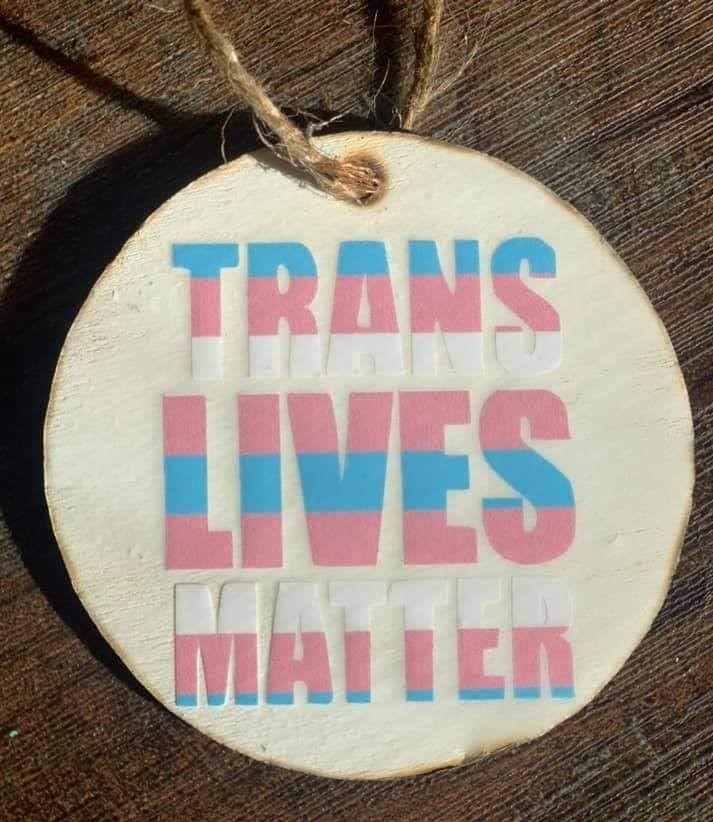

Gender Terminology
Gender -
Socially constructed collection of traits, behaviors,
and meanings that we use as a standard for how
biological differences should be represented.
Gender Identity - Person’s fundamental sense of their
own gender. This can include identifying as a
combination of genders or refusing to label oneself with
a gender. Gender identity is often confused with or
considered tied to sexual orientation, but this is
inaccurate. Gender identity and sexual orientation are
exclusive off each other.
Gender Normative (Gender Conformity, Gender Straight) -
When your gender identity and sex “match” (fit social
norms). For example, a male who identifies and behaves
in traditionally masculine ways and identifies as a man.
A term used to describe someone whose gender
presentation, whether by nature or by choice, aligns
with society’s gender-based expectations.
Cisgender - Term referring to a person who is not
transgender. It refers to a person whose gender identity
and biological sex assigned at birth are in alignment.
Cisnormativity - Assumption that all, or almost all,
individuals are cisgender. Although
transgender-identified people comprise a fairly small
percentage of the human population, many trans people
and allies consider it to be offensive to presume that
everyone is cisgender unless otherwise specified.
Gender Expression - Outward behaviors and appearances
(hair, clothing, voice, body language) by which people
manifest their gender identity or gender choices.
Gender Roles - Socially constructed and culturally
specific norms of behavior and appearance expectations
imposed based on biological sex (femininity and
masculinity).
Sex Identity - The sex that a person sees themselves as.
This can include refusing to label oneself.
CBS Sunday Morning: Growing Up Trans
Janet Mock: Knowing Her
Gender Identity With Certainty
Transgender Language Primer
Matt Nathanson: The Girl in the Kinks Shirt
Gender Revolution: Gavin
Grimm's Story
Genderquake (Part 1)
Natural Women Only: Trans Woman Barred From Beauty
Pageant
Five Things Not to Say to a Trans Person
Dysphoria: What Does it Feel Like?
Transgender Icons That Have Shaped
History
Grieving a Child Who is Still Alive
Really Cool
Gender Neutral Bathroom Signs
Trans Kids Purple Rainbow
Sex Assigned at Birth vs Gender Identity
Trans Woman Responds to
Hate Mail and Violence
All About the Transgender Symbol
Most Inspiring Transgender Celebrities




Personal Insight: Nurse
Who Cares for Gender Surgery Patients
Queer 101: Ask a Trans Man
Psych Central: Gender
Dysphoria Symptoms
Video Lesson: Anti-Trans Slurs
TED Talk: Gender is Not a Straight Line
Video Report: America's Transgender Children
My Trans Life: I'm That Scary Transgender Person
Kentucky Mom Honors Transgender Son
Video Talk: Trans Questions and Answers
Meet a Transgender Homecoming Queen
Girls to Men:
Jamie's Transgender Transition Timelapse
Kids Help Line: What is Gender Identity?
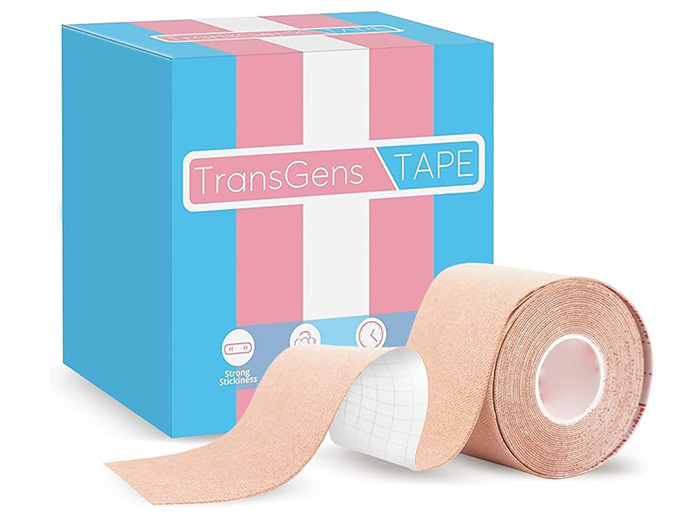 
Binding and Tucking
Binding,
tucking, packing, and padding are some do-it-yourself
(or non-surgical) options used by transgender people for
altering gender expression.
Binding - Wearing tight clothing, bandages, wrapping, or
compression garments to flatten out your chest.
Tucking - Using "gaffs" to hide the penis and testicles
so they are not visible in tight clothing.
Packing - Using a non-flesh, artificial, or prosthetic
penis (sometimes referred to as a "packer").
Padding - Using undergarments, breast forms, and foam to
create the appearance of larger breasts, hips, and
buttocks.

Important note about binding: Binding with the
nipples pointing down can seriously damage the tissue
and skin and negatively affect the result of a future
top surgery. Pressing the breasts toward you is a much
safer way of binding
Trans Care: Safe Binding and Tucking Tips
GC2B Transitional
Apparel: Binders
Truth About
Chest Binding
Target Collaborates with TomboyX to Sell Binders
Special Garments to Aid Binding and Tucking
Origami Customs:
Gaffs
Trans Health: Binding and Tucking Information
Simple Animation
Explanation: Binders
Gaffs 101: Tucking Safely and Comfortably



Identity
Development
Based on
D’Augelli’s Model of LGB Identity Development (1994),
the processes do not necessarily occur linearly nor does
every transgender person experience each process. It
should also be noted that the term “transgender” covers
a wide variety of identities. Individuals may experience
the stages in different ways or to different degrees
depending on how they specifically identify and the
particular restrictions or prejudices that society
places on that identity.
Exiting a Traditional Gender Identity - Involves
recognition that one is gender variant, attaching a
label to this identity, and affirming oneself as gender
variant through coming out to others.
Developing a Personal Transgender Identity - Entails
achieving the stability that comes from knowing oneself
in relation to other transgender people and challenging
internalized transphobia.
Developing a Transgender Social Identity - Focuses on
creating a support network of people who know and accept
that one is gender variant.
Becoming a Transgender Offspring - Consists of coming
out as transgender to family members and reevaluating
relationships that may be disrupted by the disclosure.
Developing a Transgender Intimacy Status - Involves the
creation of intimate physical and emotional
relationships.
Entering a Transgender Community - Involves making a
commitment to political and social action and
understanding identity through challenging transphobia.



GLAAD: Transgender Terminology
Roberta Close:
Brazilian Trans Model
Carmen Carrera: Things Trans
Women Want You To Know
DotGay Dictionary: What is Gender
Identity?
Gigi Gorgeous: Story of a Trans Woman
Info:
Gender Expression
Video List: Most Famous Transgender People Worldwide
Genderquake (Part 1)
Maya Henry: Things Not to Say to Trans Girls
Transgender Universe
Everything You Need to Know About These
Popular Transgender Celebrities
Counselor Competencies for Working With Transgender
Clients
Changing: Trans Teen Music Video
Gift Guide for Parents With Trans Kids
Harris Poll: Growing Acceptance of Transgender Issues
Shattering Myths: Trans Women's Bodily Concerns
Info: Gender Queer
Transgender
Child: Mom, I'm Not a Girl
Kovu Kingsrod: I'm a Soft
Boy and That's Okay
Helpful Trans Tips
Outing -
Remember that revealing the transgender status of any
transgender person without his or her expressed
permission has the same potential for harm as outing a
gay man, lesbian, or bisexual man or woman. Outing is an
invasion of privacy.
Appearance - Do not assume that someone who appears to
be cross-dressed is a "transvestite." That person may or
may not be living full-time in their presenting gender,
or they may intend to do so in the future. Instead of
the stigmatizing "transvestite", use the terms male
cross-dresser or female cross-dresser if it's clear that
they are not living full-time nor intend to do so.
Living Status - If a transgender person is living
full-time in a gender not associated with their birth
sex, that person should be referred to at all times with
terms appropriate to their presenting gender, regardless
of their surgical status or body state.
--Transgender Woman (Trans Woman) is an appropriate term for
Male-To-Female (MTF) persons.
--Transgender Man (Trans Man) is an appropriate term for
Female-to-Male (FTM) persons.
--Transgender Person (Trans Person) is an appropriate term for someone
of either above types.
--Transgender People (Trans People) is an appropriate term for mixed
groups.
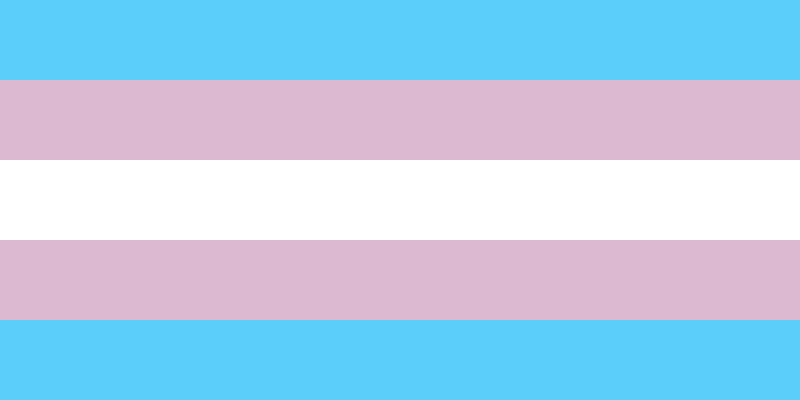
Trans Lifeline
Transgender Suicide Hotline
Genderbread Person
Trans and Gender Non-Conforming Identities
Gender and Gender Identity
Info:
Deadnaming
TED Talk: Gender is Not a Straight Line
Genderquake (Part 2)
DotGay Dictionary: What is Gender
Identity?
National Transgender Discrimination
Survey
Trans Terms You Should Know
Video: Trans 101
Am I Trans? Figuring Out
Your Gender
Surgical Status - Almost all transsexuals
(pre-operative, post-operative, non-operative) and many
transgender people are extremely sensitive about their
surgical status and/or their body's physical state.
Questions about this should be avoided or, if medically
necessary, asked very sensitively. Moreover, this
information should be considered confidential and should
not be shared with others unless it is medically
necessary. Regardless of their surgical status, the
appropriate term for a Male-To-Female Transgender person
is Transgender Woman, and for a Female-to-Male Transgender
person,
Transgender Man.
Quotation Marks - Avoid aspersion by not using quotation
marks (as if to suggest "sort of" or "not quite" or "not
actually"). Never put pronouns or possessive adjectives of
transgender persons in quotes. Never put their sexual
orientations or genitalia in quotes.
Pronouns and Possessive Adjectives - It is extremely
offensive to refer to transgender persons using pronouns
and possessive adjectives that refer to their birth sex.
Use pronouns and adjectives appropriate to the
transgender person gender expression. If you are
uncertain, ask what they prefer. Some people prefer the
new pronoun ze (pronounced “zee”) in lieu of she/he, and
the new possessive adjective hir (pronounced “here”) in
lieu of his/her.
Self-Identification - Not all transgender people use the
same terminology to describe themselves. When in doubt,
just ask an individual transgender person how they wish
to be identified. If you’re not sure how to address
someone, just ask. Or simply use their first name or
last name. It's sometimes customary for patients or
clients in clinical situations to be addressed by their
last name when it’s time to see their providers.

Info:
Cisnormativity
Transgender Universe
Changing: Trans Teen Music Video
WPATH: World
Professional Association for Transgender Health
Ava Rose: How Do You Know If You're Trans?
Transgender Language Primer
HRC: Epidemic of Violence Against Trans People
CNN: Killings of Trans People in US Increasing
Wikipedia: Gender Identity
Glee Video: If I Were a Boy
Glossary of Transgender Terminology
Trans Woman Responds to
Hate Mail and Violence
Love Letter to My
Granddaughter (Who Used to Be My Grandson)
Murders of Trans People in
US Could Hit Record High in 2020
Zander Keig: Latinx Trans Social Worker
Trans Ask: What Do You Transition to if
You are Non-Binary?
Info:
Sex and Gender
Scarleteen: Sex Ed For The Real World
Trans and Gender Queer Over 50
Transgender Needs
Transgender persons may
identify as heterosexual, so they may not be dealing
with issues of sexuality. However, depending on how they
sexually identify, transgender people may face
discrimination from both heterosexuals and LGB people.
They may experience more verbal and physical attacks
than most LGB people if they cross-dress or otherwise
“look gender variant.”



Info: Transgender
Info:
Deadnaming
Info:
Preferred Pronouns
Info:
Cisnormativity
Info: Gender Non-Conforming
They are generally less
accepted in society than LGB people, in large part due
to ignorance. There is little understanding of
transgender lives. They are not visible in popular
culture beyond stereotypes and almost no research has
been done on their experiences.
They sometimes experience a lack of acceptance and
support from the LGB community.
As a result of the lack of acceptance and support in the
dominant culture and in the LGB community, they often
lack a strong community and positive role models or
images. Consequently, transpeople, especially trans
youth, may feel isolated and marginalized.
Transpeople may want to remain closeted because of the
legitimate fear of how they will be treated by their
professors, employers, co-workers, friends, and others
in their field.
Transpeople often have a hard time finding medical help
that is knowledgeable and understanding concerning
transgender issues.
If transitioning, they will need to change their
identification as well as other records and documents.
Keep in mind that different states and institutions have
different rules about when and if these changes are
possible.
They are especially vulnerable to attack, harassment,
and/or embarrassment when trying to use the gender
appropriate bathroom.
Transpeople often have others refer to them as a gender
different than the one with which they wish to identify
or insist on calling them by their given name even
though they have changed it.
[Source: Beemyn, B., 2003, Serving the needs of
transgender college students. Journal of Gay and Lesbian
Issues in Education]
Affirmations: Parents and Their Trans Kids
Huff Post: Broader Acceptance of Gender Non-Conformity
Gender Therapist Advice: Can I Trust the Way I Feel?
Slideshow: Transgender Resources
DotGay Dictionary: What is Gender
Identity?
Genderquake (Part 1)
Dwayne Wade's Trans Daughter Makes Red Carpet Debut
HRC: Parents
for Transgender Equality
Info: Gender Queer
Statistics on Transgender Mental Health
Carmen Carrera: Things Trans
Women Want You To Know
Ava Rose Trans Info: Transition Tips
Video Journey: My 20 Year FTM Timeline
PBS Video: Transgender Issues
Hardships for
Transgender Youth
Transgender youth often
face enormous hardships when they acknowledge and
express their gender identity.
They may be thrown out of the house when their family
discovers that they are transgender, often forcing them
to live on the streets.
They typically face harassment and abuse in school to
such an extent that they quit, which makes it hard for
them to get decent-paying jobs (for example, a survey of
more than 250 transgender people in Washington, DC found
that forty percent had not finished high school and
another 40 percent were unemployed).
Even if they are able to get an education, they have
difficulty finding and keeping almost any kind of job
because of discrimination, forcing some to become sex
workers.

Info: Transgender
Info:
Deadnaming
Info:
Preferred Pronouns
Info:
Cisnormativity
Info: Gender Non-Conforming
If they live on the streets or are a sex worker, they
are at a greater risk for abusing drugs, becoming
infected with HIV, and being subjected to
anti-transgender violence.
Many lack access to health care, including proper
counseling and medical supervision for those who are in
the process of transitioning. And when they do get
medical treatment, they frequently face discrimination
and hostility from health-care workers. Consequently,
some transsexuals decide to treat themselves by buying
underground hormones, which can contain dangerous if not
deadly chemicals.
Because gender reassignment surgery can cost more than
$100,000 and is not covered by most health insurance
policies, even most middle-class transsexuals cannot
afford the procedures.
The ultimate result is often high rates of depression,
drug and alcohol abuse, and thoughts of suicide among
transgender people (thirty-five percent of the
respondents to the DC survey mentioned above reported
that they had seriously considered suicide).
Many transgender people who can “pass” will choose to
remain closeted, so trans youth often do not have
visible role models and mentors.
[Source: Beemyn, B., 2004, Legal and Political Rights of
Transgender People, Ohio State University, Gay, Lesbian,
Bisexual, and Transgender Student Services Web]
Trevor Project: Raising a Trans Child
Transgender Students Deserve to Learn and
Thrive in School
Transgender Celebrities Who Broke
Barriers
Gender-Affirming Surgeon Wishes Politicians Would Listen
to Trans Patients
Alex Consani Becomes First Transgender Model of the Year
at UK Fashion Awards
Sade to Release New Song Dedicated to Her Trans Son
Empowered Trans
Woman
Gender-Affirming Care: What It Is and Why It's Necessary
Marlon Wayans, Who Has a Trans Son, Trolls Bigots with
Pride Post
Looking for Home: Some Transgender People
Find Community in Unexpected Places
Television’s Most Trailblazing Transgender Characters
Video: I Am a Transgender Woman
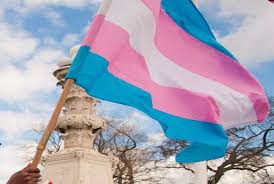
Teachable
Moment: Lesson From a Science Teacher
I just saw a transphobic
post that was like, "In a sexual species, females have
two X chromosomes and males have an X and a Y
chromosome. I'm not a bigot. It's just science."
Well, I am a science teacher, so I posted the following
comment.
First of all, in a sexual species, females can be XX and
males can be X, as in insects. Females can be ZW and
males can be ZZ, as in birds. And females can be females
because they developed in a warm environment and males
can be males because they developed in a cool
environment, as in reptiles. Females can be females
because they lost a penis in a sword fighting contest,
as in some flatworms. Males can be males because they
were born female but changed sexes because the only male
in their group died, as in parrotfish and clownfish.
Males can look and act like females because they are
trying to get close enough to actual females so they can
mate with them, as in cuttlefish and bluegills. Or you
can be one of thousands of sexes, as in slime molds and
some mushrooms.
Oh, did you mean humans? Okay then. You can be male
because you were born female, but you have
5-alphareductase deficiency and so you grew a penis at
the age of 12. You can be female because you have an X
and a Y chromosome, but you are insensitive to
androgens, and so you have a female body. You can be
female because you have an X and a Y chromosome, but
your Y is missing the SRY gene, and so you have a female
body. You can be a male because you have two X
chromosomes, but one of your X's has a SRY gene, and so
you have a male body. You can be male because you have
two X chromosomes, but also a Y chromosome. You can be a
female because you have only one X chromosome at all.
And you can be a male because you have two X
chromosomes, but your heart and brain are male. And vice
versa.
Don't use science to justify your bigotry. The world is
way too weird for that shit. Class dismissed.
[Source: Science Teacher, Facebook]
Video Tutorial: Transgender Basics
Carmen Carrera: Things Trans
Women Want You To Know
Most Inspiring Transgender Celebrities
Gender and Gender Identity
Trans Sistas of Color Project
DotGay Dictionary: What is Gender
Identity?
Grassroots Groups That Affirm and Support
Transgender People
Video Chat: How Do You Know You're Transgender?
Girls to Men: Jamie's
Transgender Transition Timelapse
Documentary: Transgender Kids
How the Mothers of Transgender Children
Are Changing the World
Transgender Teen Shares Powerful Message
State by State: Bringing
Trans Men Together
Alice: Transgender Story
Trans Kids Purple Rainbow
HRC: Little Known Historical Trans Facts
Gender-Affirming Hormones: Early Access Linked to Better
Mental Health

Carmen Carrera:
Things Trans
Women Want You
To Know
SPLC: Why Gender
Affirming Care
is Necessary
Trump Demonizing
Trans People is
a Deliberate
Distraction
Trans Girl is
Told Not to Wear
Dress to Her
Graduation
Love Boat: How They
Addressed Transgender Issues Back in
1982
Esquire Essay: The
Euphoria of Elliot Page
Trans Icon: Chelsea Manning's Story
Empowered Trans Woman
Beautiful Portraits of Transmasculine People
Marina Machete
Makes History:
First Trans
Woman Crowned
Miss Portugal
How Many Trans
and Intersex
People Live in
the US?
Lucy Spraggan:
If I Could Have
I would Have
Undergone
Gender-Affirming
Surgery as a
Teen
Personal Insight: Nurse
Who Cares for Gender Surgery Patients
Transformation: Male to Female
Dylan Mulvaney on The Drew
Barrymore Show
Meet a Transgender Homecoming Queen
Am I Trans? Figuring Out
Your Gender
What Age Do Transgender Kids Know They’re
Trans?

HOME
QUEER CAFE
│ LGBTQ Information Network │ Established 2017
|